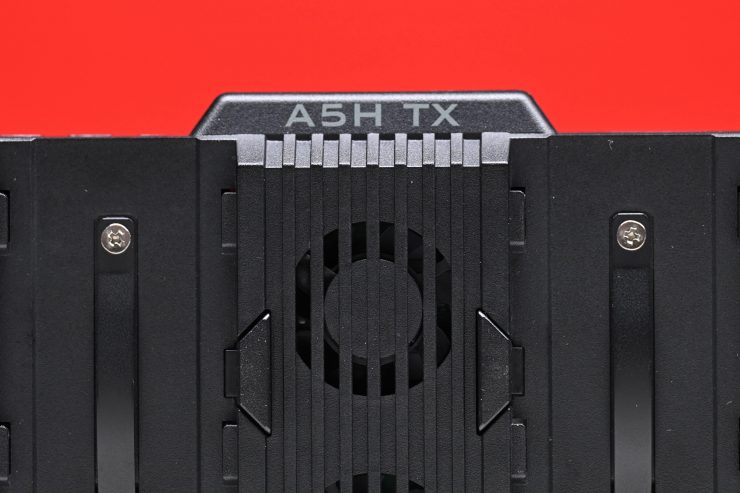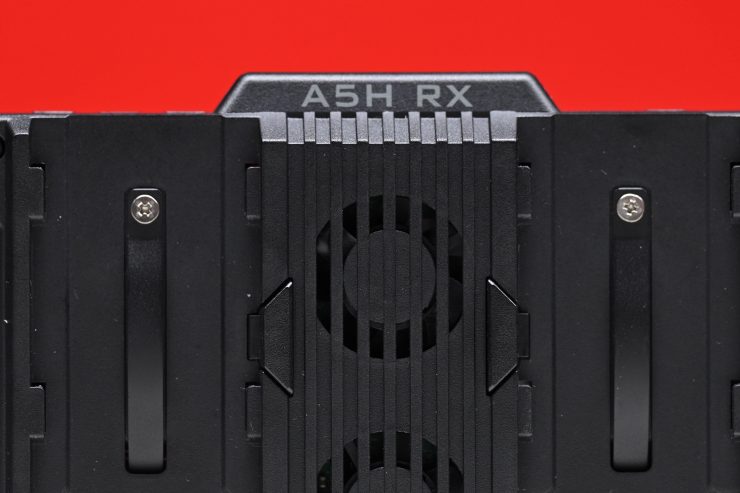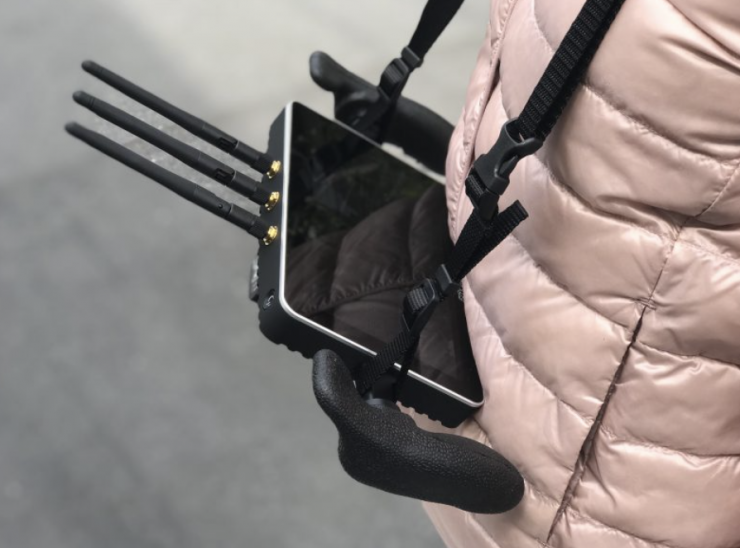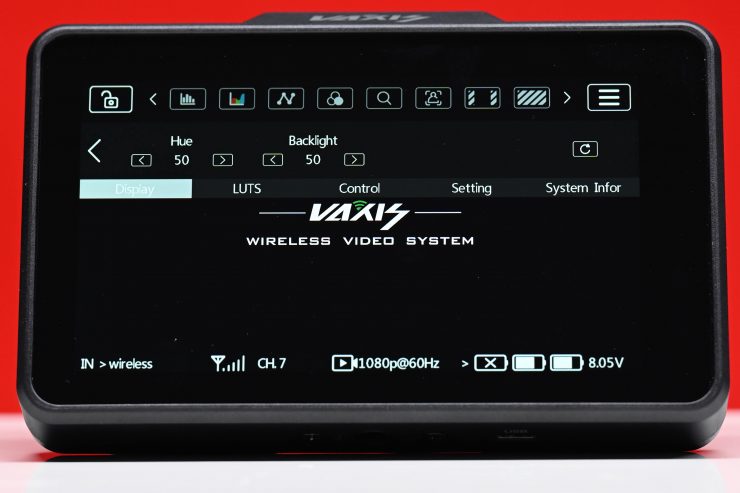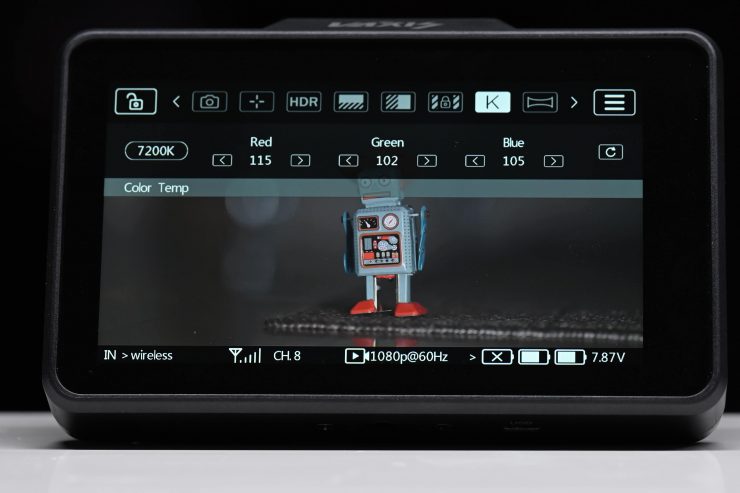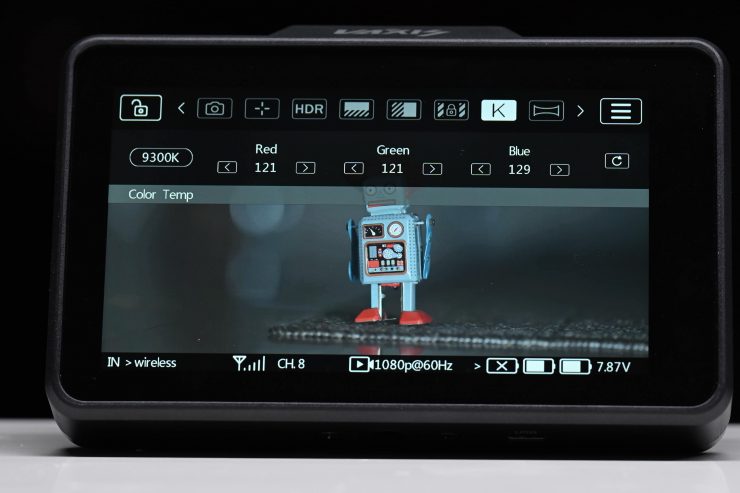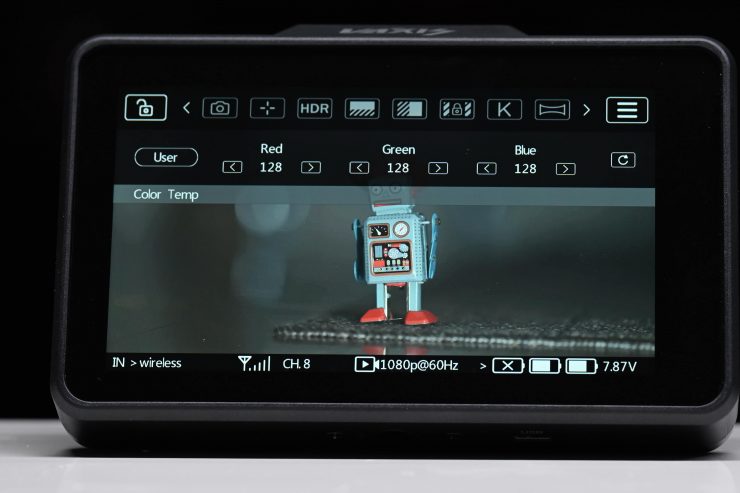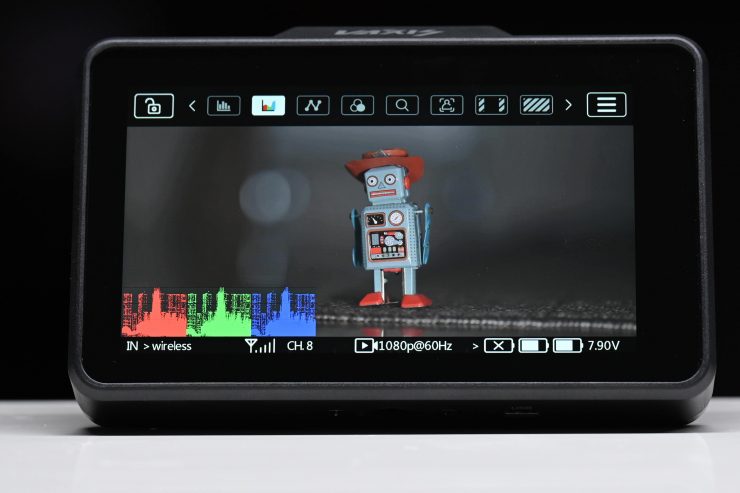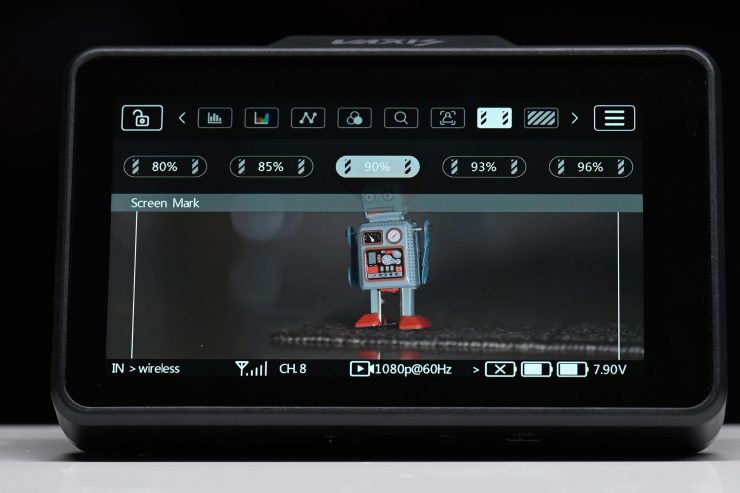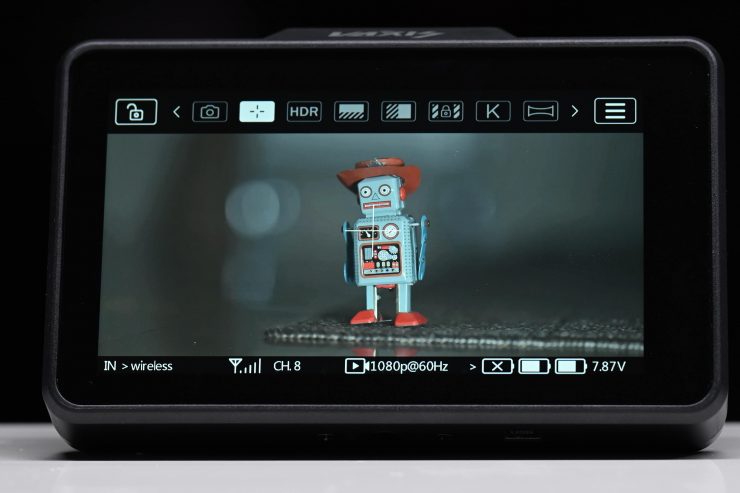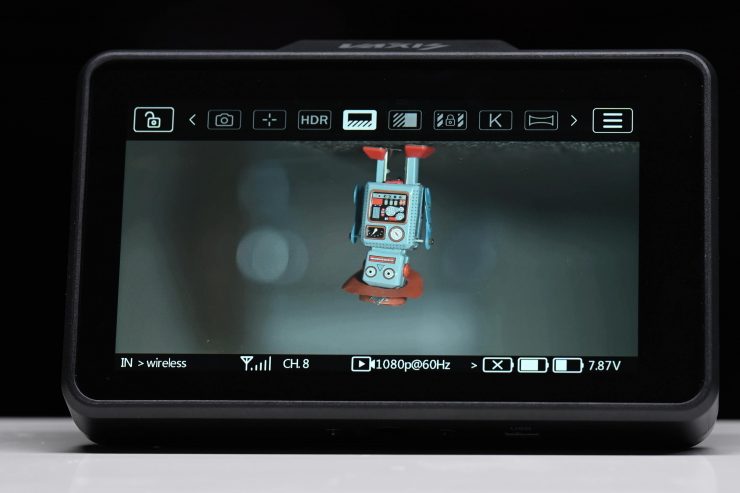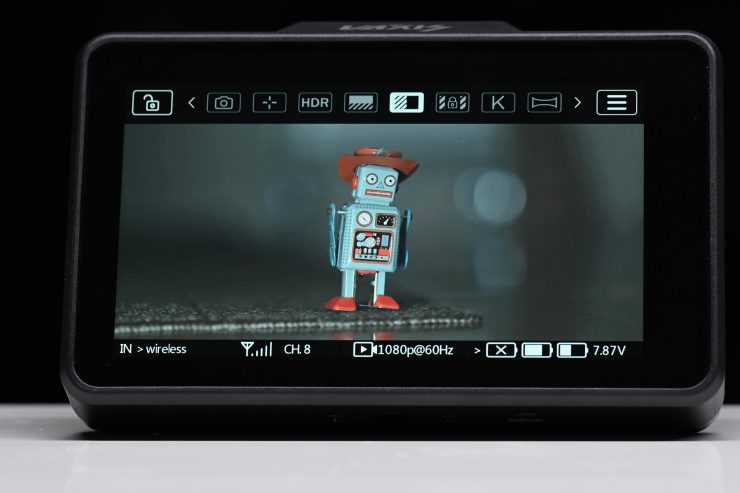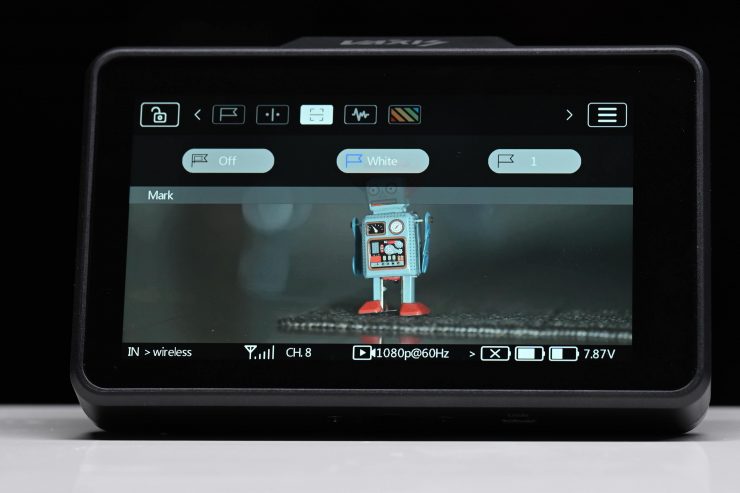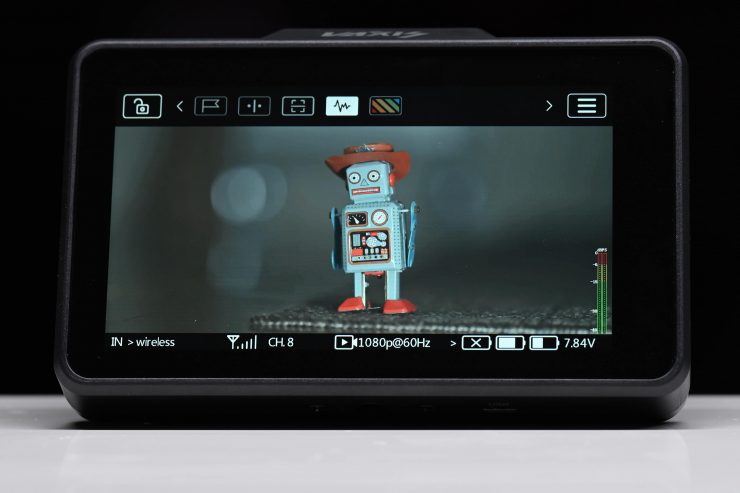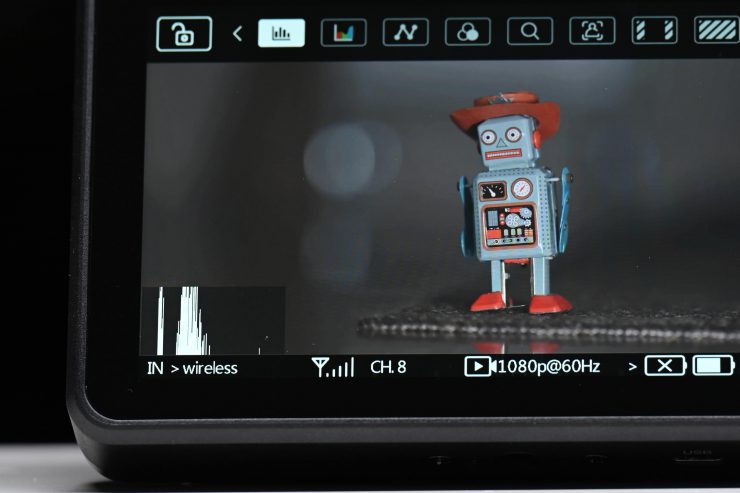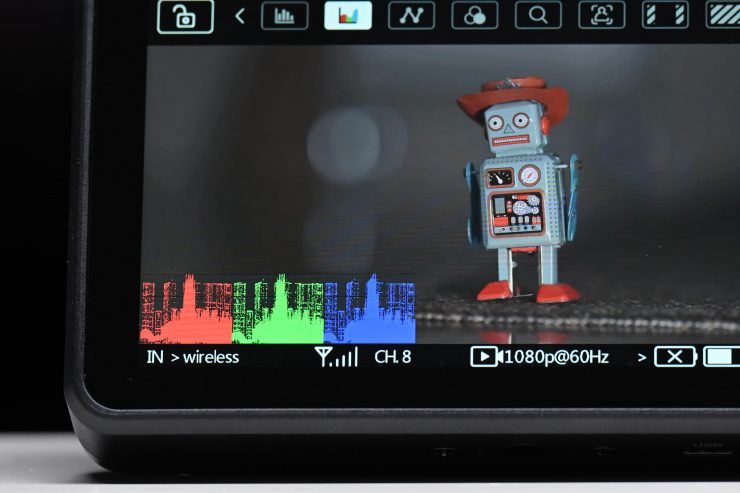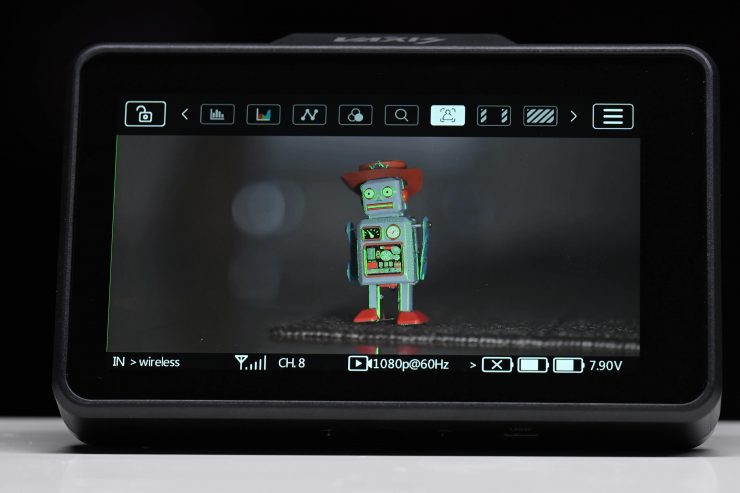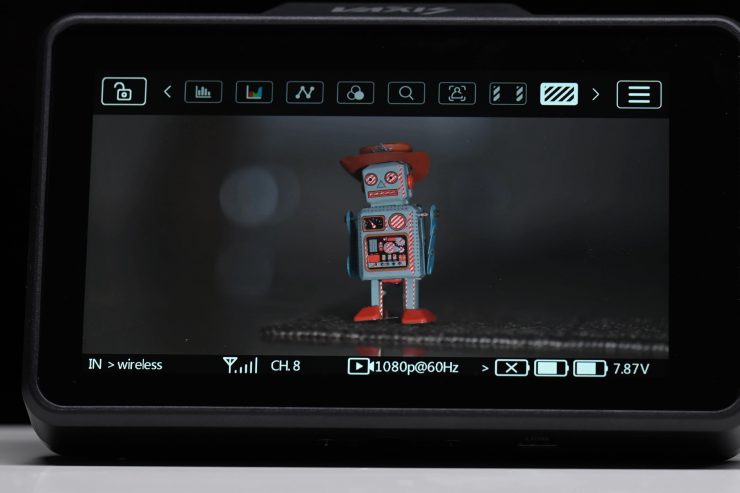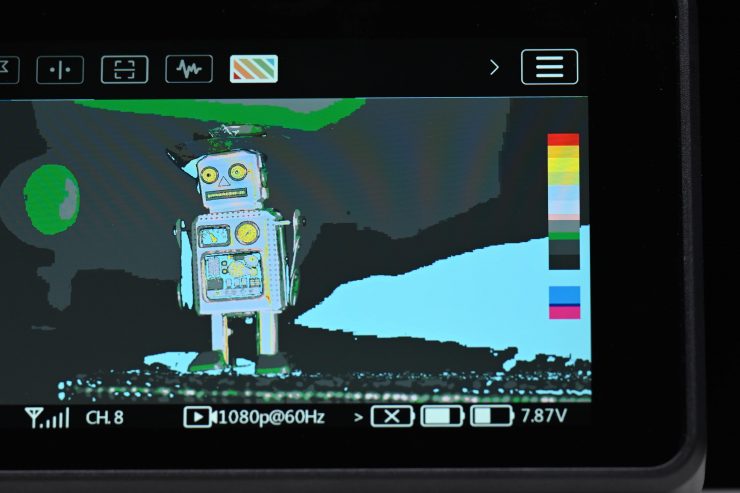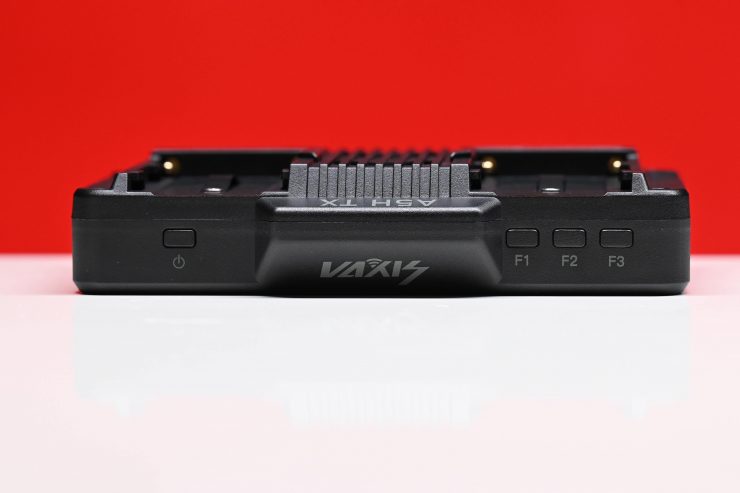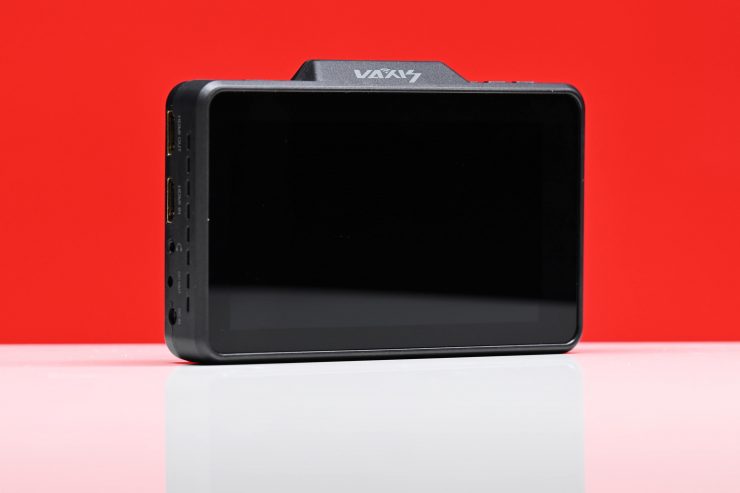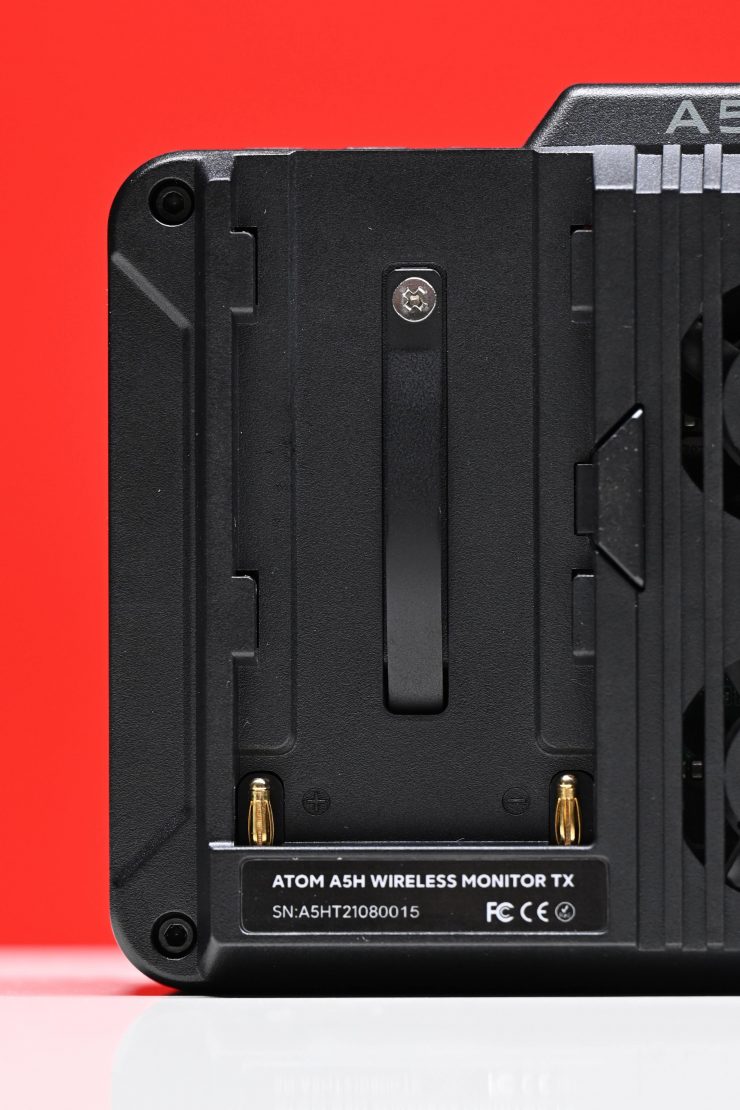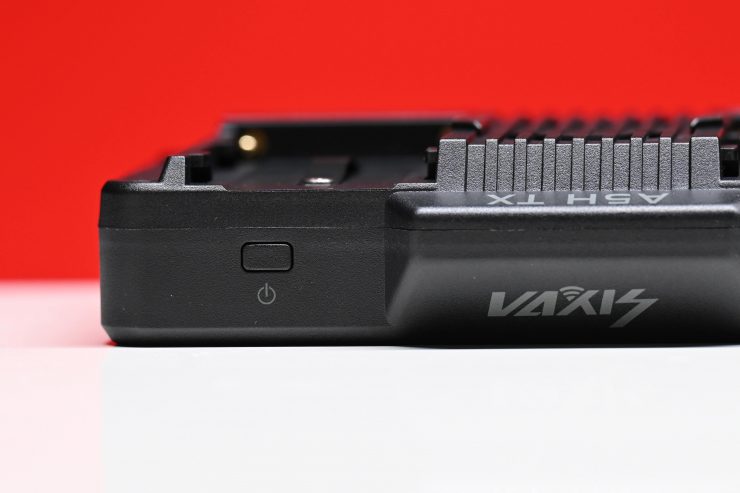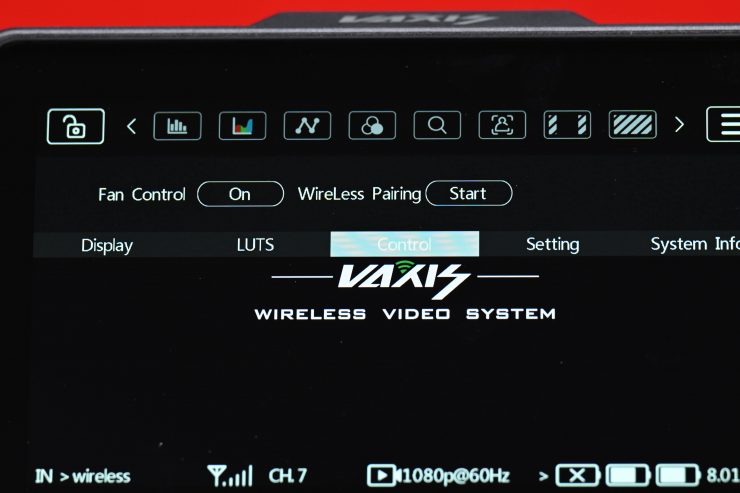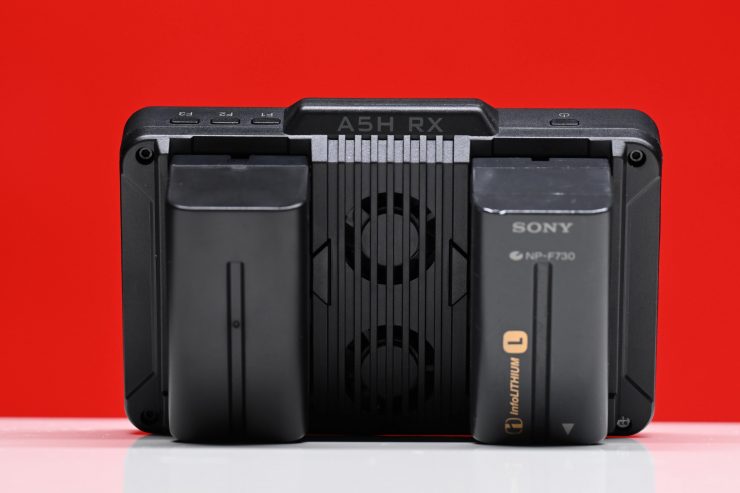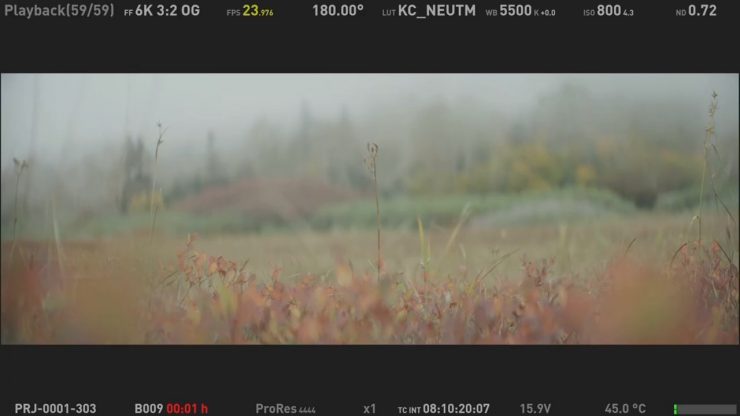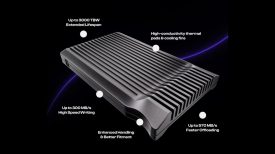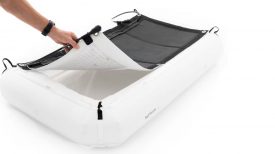
The new Vaxis A5H Monitor is a 5″ wireless monitor that comes in either a TX or an RX unit. If you used it as an on-camera monitor you could transmit images to one Vaxis RX unit and up to three mobile devices. If you choose the RX unit you could use it to receive signals from either an A5H TX or a Vaxis Atom 500.
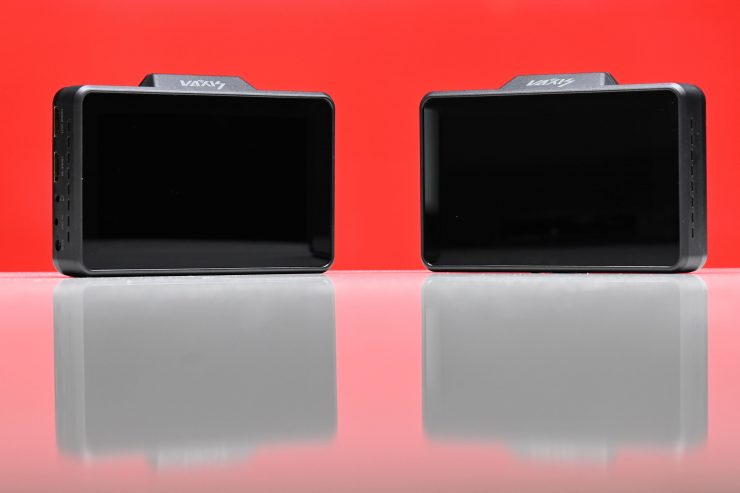
Both the A5H TX and RX units look identical. The only way to tell them apart is by the labeling on the back of the monitors.
Concept
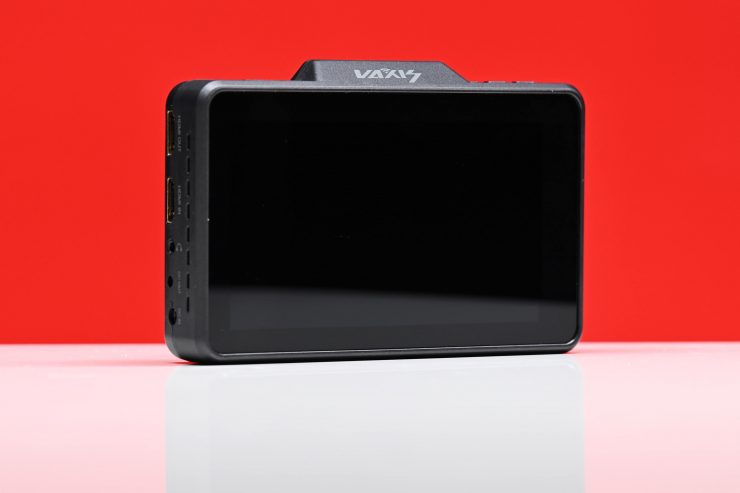
The concept is pretty simple. It was designed to be an on-camera monitor that can also transmit wireless video, or in the case of the A5H RX unit, an affordable wireless directors monitor.
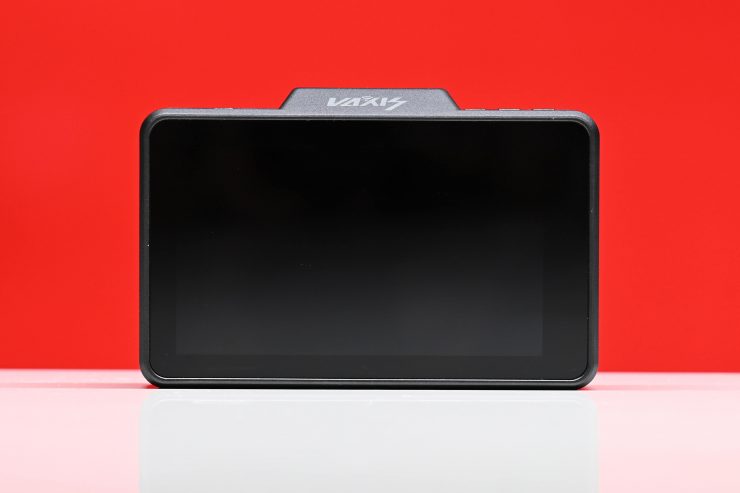

Vaxis A5H 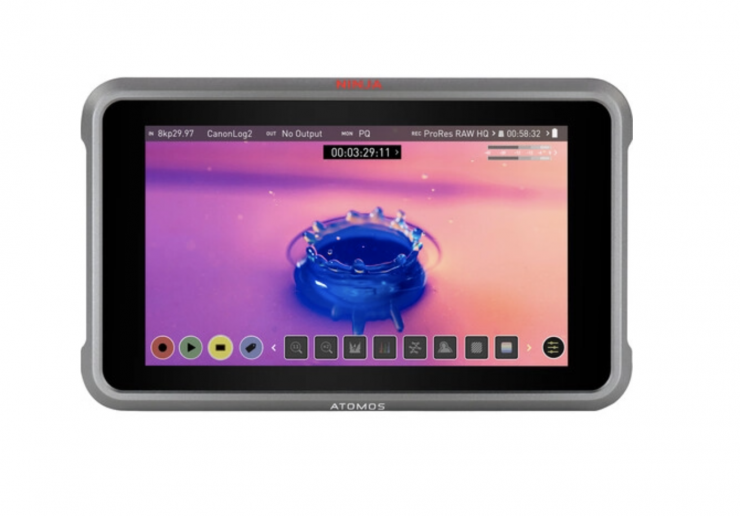
Atomos Ninja V+ 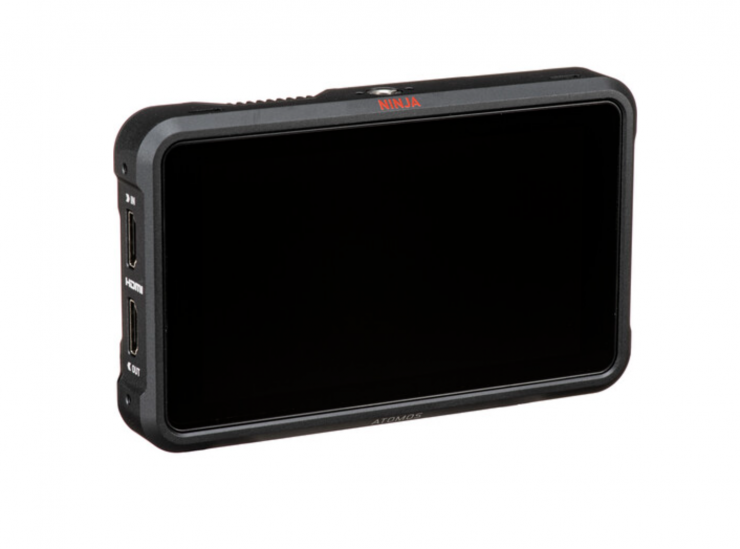
Atomos Ninja V
In a lot of ways, it looks quite similar to monitors such as the Atomos Ninja V and Ninja V+.
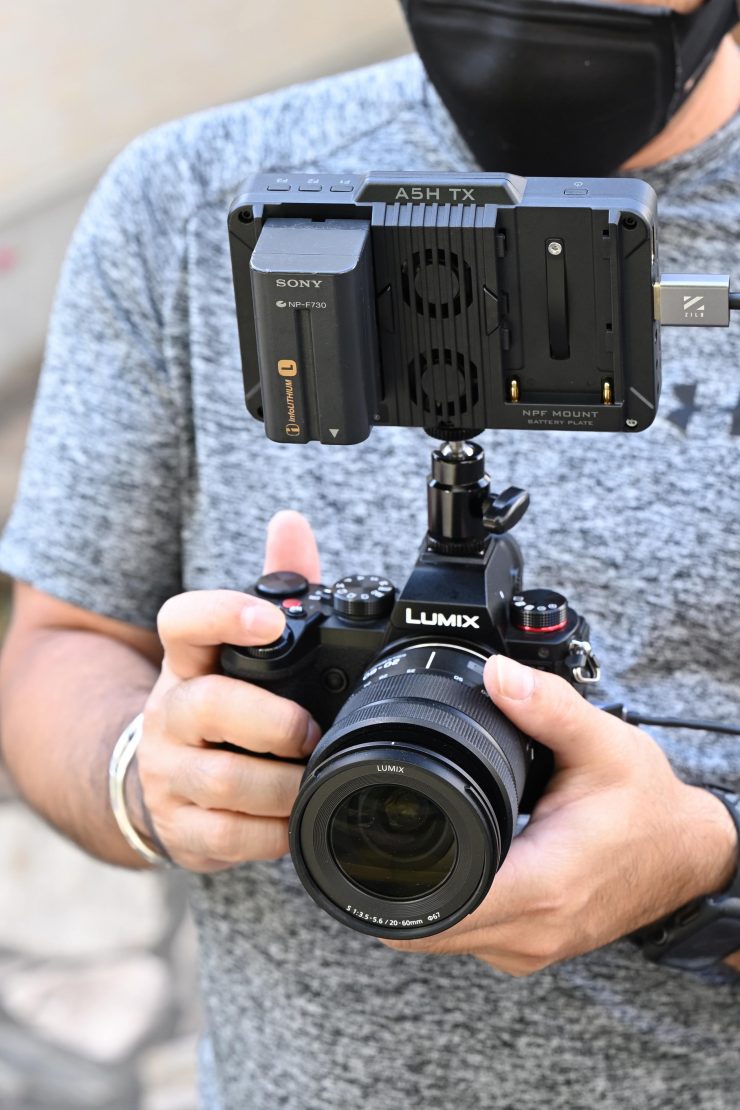
The whole philosophy behind the A5H is convenience. By integrating wireless into a small-sized monitor you take away some of the pains of traditional wireless monitoring. You only need to power one device, don’t need to mount one product to another and you don’t need to run any additional cables. By keeping things simple, it allows filmmakers to spend more time actually creating, instead of worrying about equipment.
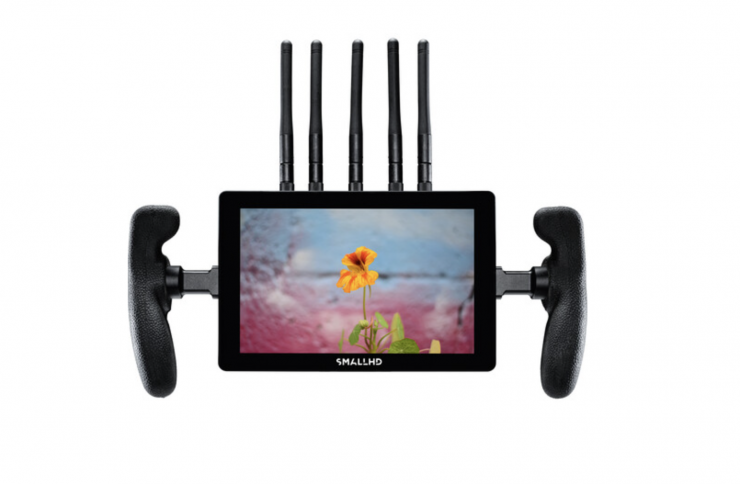
Integrated wireless video is nothing new and SmallHD and Teradek have been doing it for quite a long time.
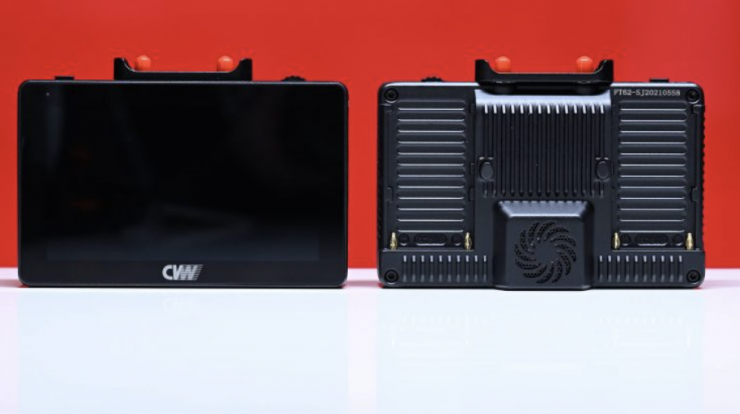
We have also starting to see ‘budget’ options appearing from a range of other manufacturers, such as the Crystal Video Technology Swift Z 5.5″ HDMI 1080p Wireless TX/RX Dual-Monitor Kit which I reviewed previously on the site.
Key features
- 5.5″ touch screen monitor
- 1920 x 1080 resolution screen
- 1000nit brightness
- 1000:1 contrast ratio
- HDMI input and output
- Built-in wireless TX or RX (depending on version)
- Wide range of monitoring tools
- DC input & DC output
- Compatible with Vaxis Atom500
- Viewable on up to 3 devices using the Vaxis Vision iOS or Android App
- 182.88m / 600ft range
Who is it aimed at?
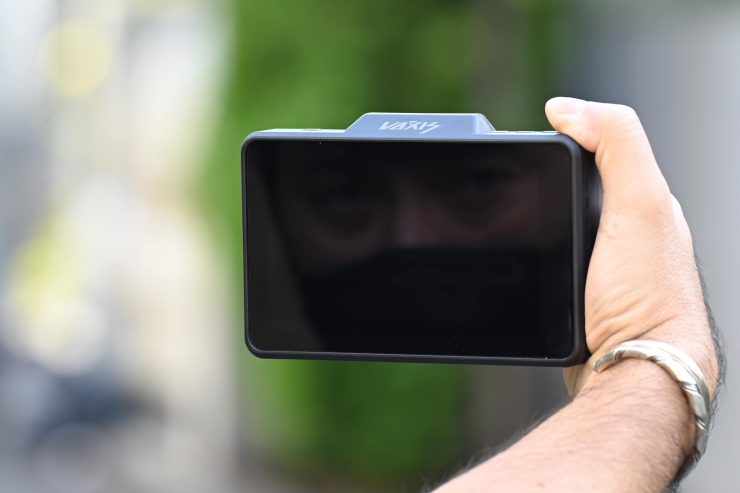
The A5H is clearly being focused at users and who are looking for an affordable all-in-one wireless monitoring solution, with the added versatility of being able to use it as a stand-alone monitor. This could mean anyone from people starting out on a budget, right up to seasoned professionals.
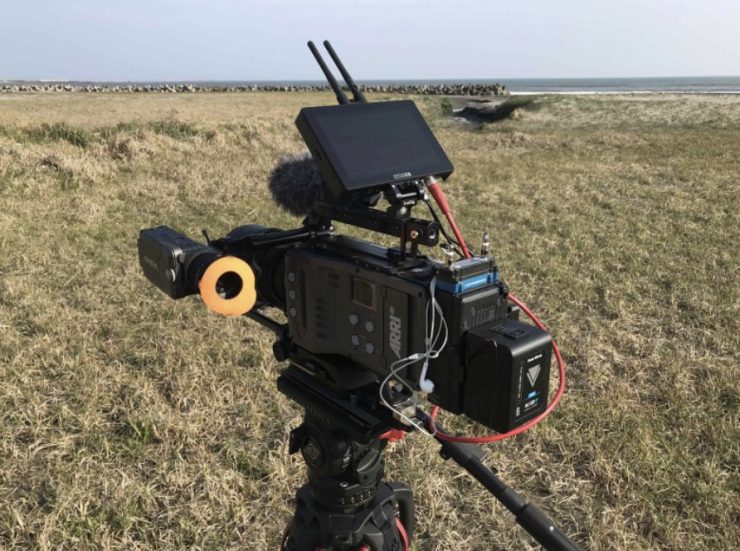
Shooters working on high-end factual productions will often get requests to provide a wireless monitoring solution as part of their kit. My go-to solution is usually the SmallHD Cine7 500 TX and a SmallHD Focus 7 Bolt 500 RX. However, you can get by with a lot more affordable solutions depending on the requirements of the production.
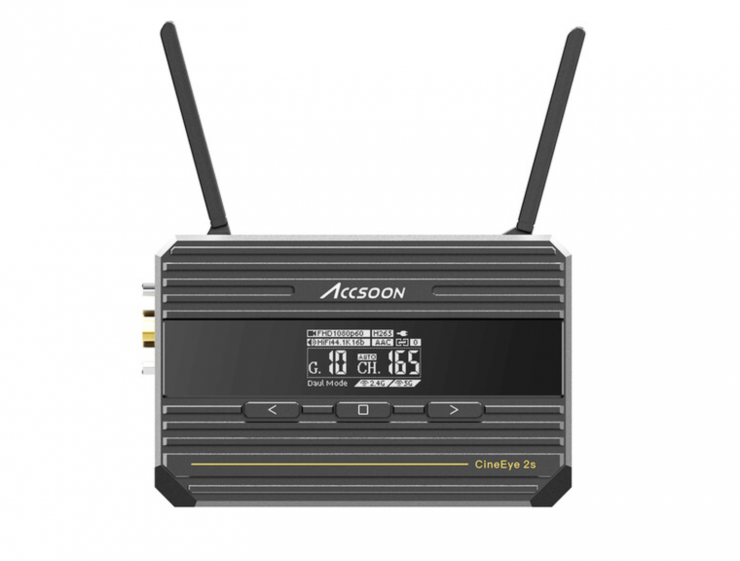
Occasionally I will also use Wi-Fi-based TX units such as the Accsoon CineEye 2S Wireless SDI/HDMI Video Transmitter that can send signals straight to multiple mobile devices.
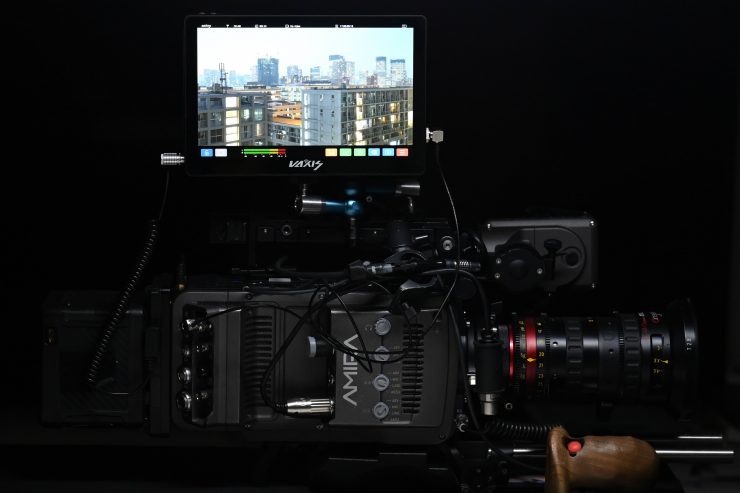
You could also use the A5H as an on-camera monitor whenever you don’t need to provide a wireless video system.
This is not their first rodeo
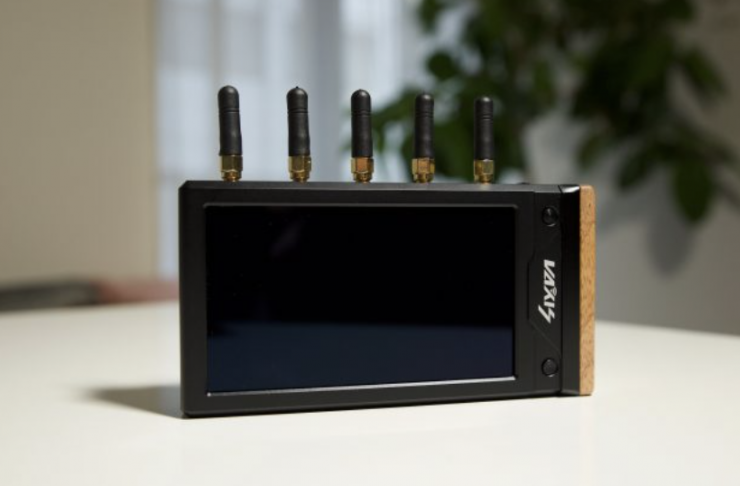
This isn’t Vaxis’s first attempt at making integrated monitors with wireless capabilities. Back in 2019, they released the Storm Focus 058 which I reviewed on the site. While the concept behind that product was good, the execution was poor, and I personally found that the monitor wasn’t up to the job and it lacked any type of decent operating system or monitoring tools.
Earlier this year they also announced the Cine8. You can read the review of the Cine8 here. The Cine 8 was a pretty good solution, but it is being targeted at the higher end of the market.
Screen
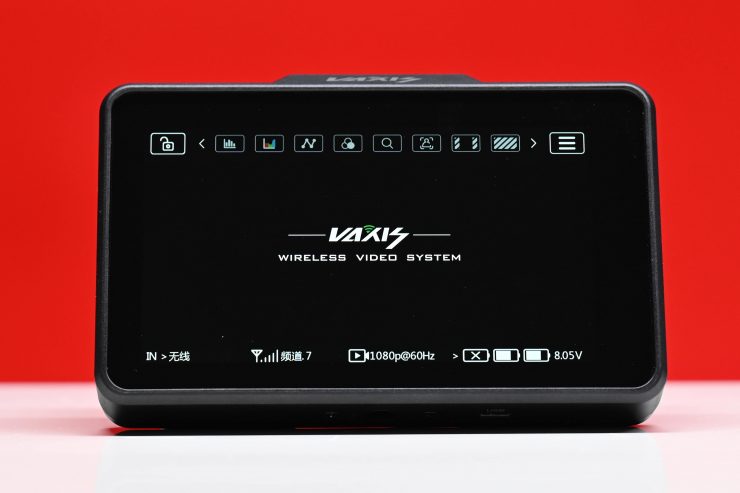
The A5H utilizes a 5.5″ 1920 x 1080 resolution screen with a claimed brightness of 1000nits. As a comparison, the Atomos Ninja V has a 5″ 1920 x 1080 resolution screen with a brightness of 1000nits.
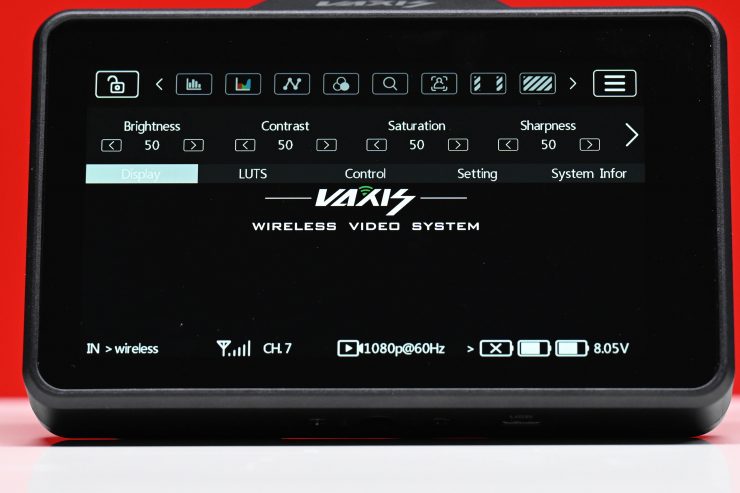
As far as the image controls are concerned, you can choose from the following options:
- Brightness
- Contrast
- Saturation
- Sharpness
- Hue
- Backlight
All of these parameters can be adjusted from 0-100. In their default settings, there are all set at 50.
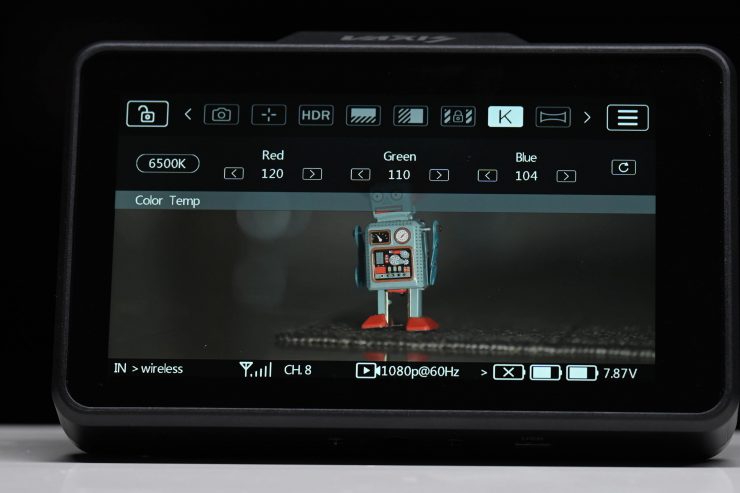
You can also adjust the color temperature of the display to 6500K, 7200K, or 9300K. There is also a User option where you can independently adjust the amount of red, green, and blue.
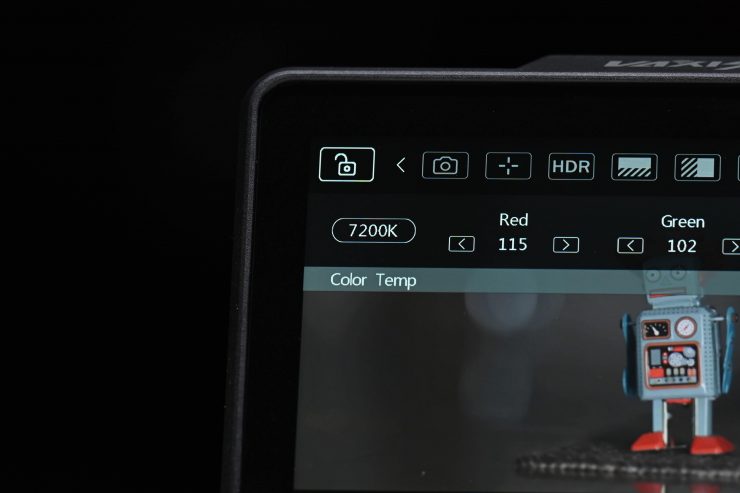
What I found a little strange is that the monitor seems to de-fault to 7200K when you first turn it on. I would have thought at 6500K would have been the default setting.
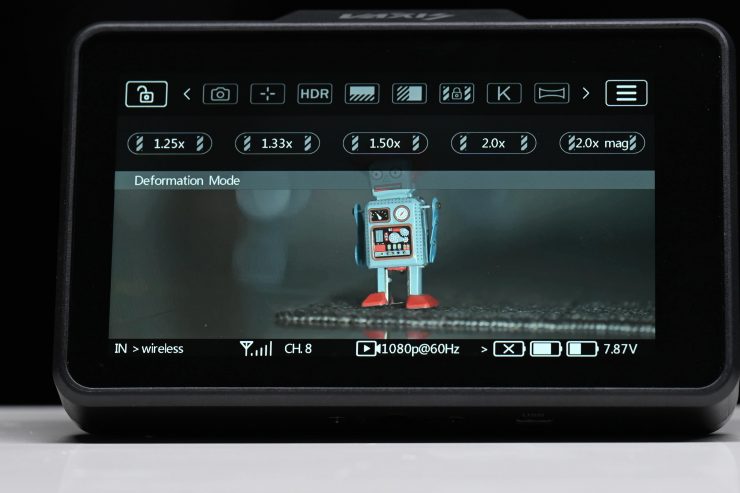
There are anamorphic de-squeeze viewing options for:
- 1.25x
- 1.33x
- 1.5x
- 2x
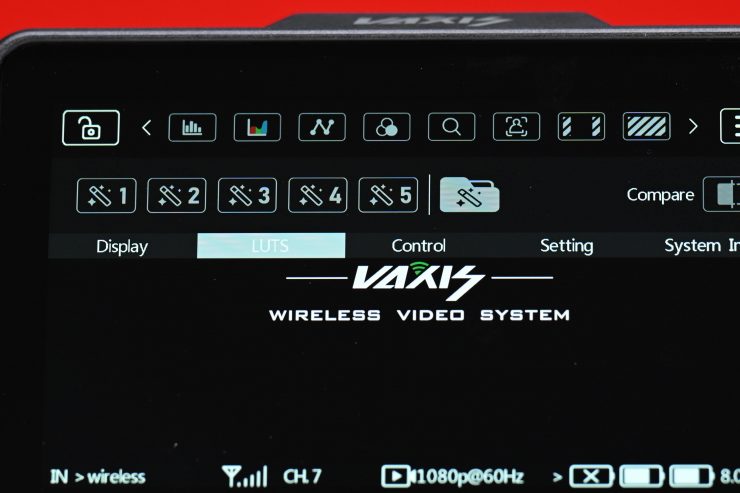
You can set 5 different LUTs as presets and you can also load up your own LUTS.
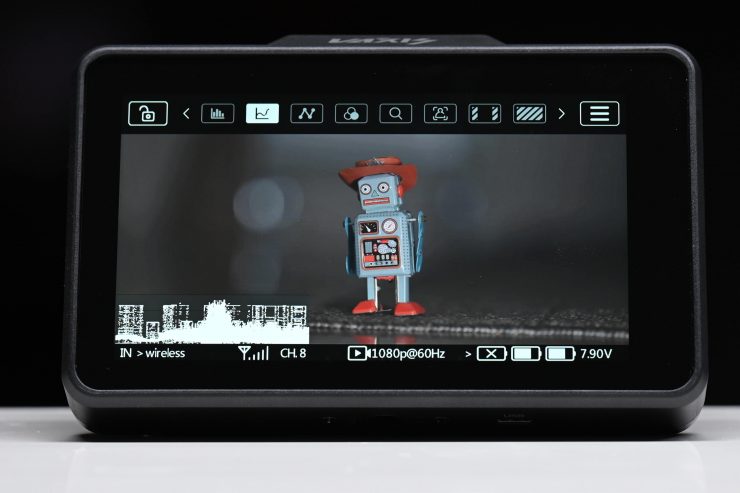
The monitor also features the usual exposure and focus assist tools such as:
- Histogram
- Waveform
- Vectorscope
- Monochrome
- Image Zoom
- Peaking
- Safe Area
- Zebras
- Center Mark
- Image Flip
- Mirror Image
- Image Freeze
- Image marker
- Point to Point
- Scanning Mode
- False Color
The trouble with most of the image assist tools such as waveform, vectorscope, histogram, etc. is that you cannot move them around on the screen or change their size.
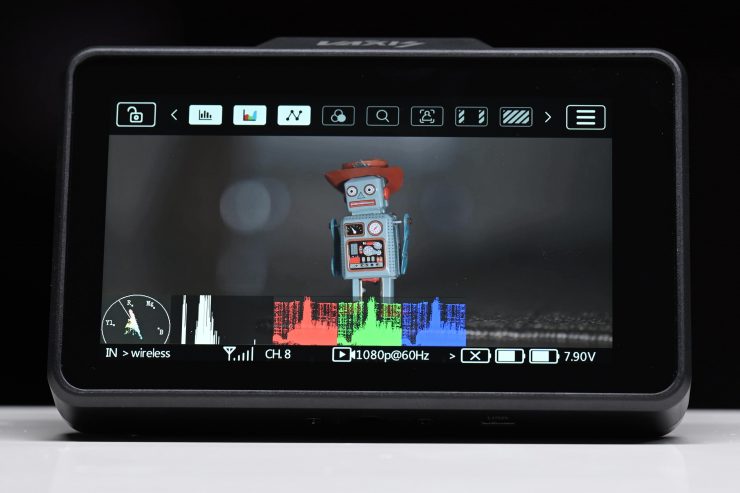
You can, however, have multiple tools selected at once.
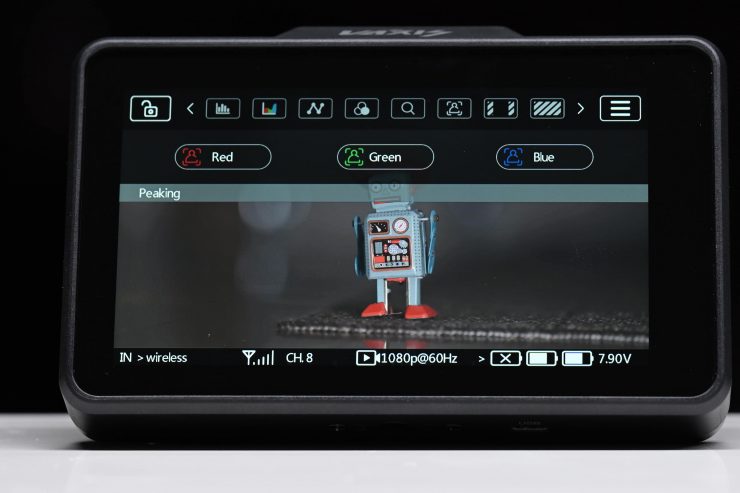
The peaking can be set to red, blue, or green. There is no way of adjusting the intensity of the peaking.
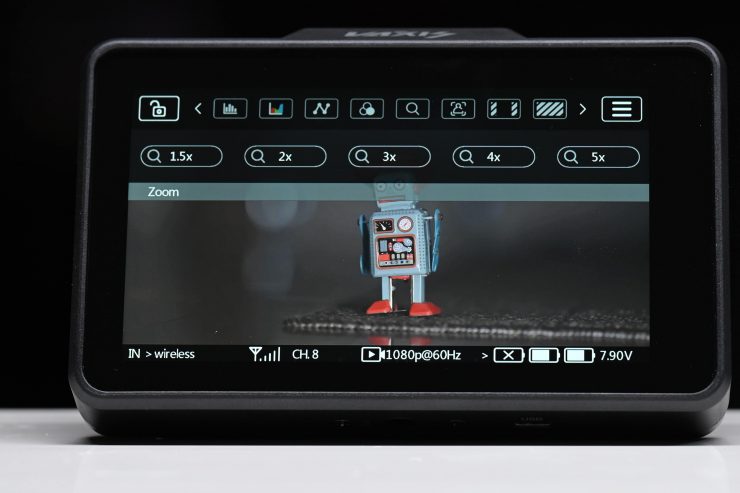
With the image zoom you can choose from:
- 1x
- 2x
- 3x
- 4x
- 5x
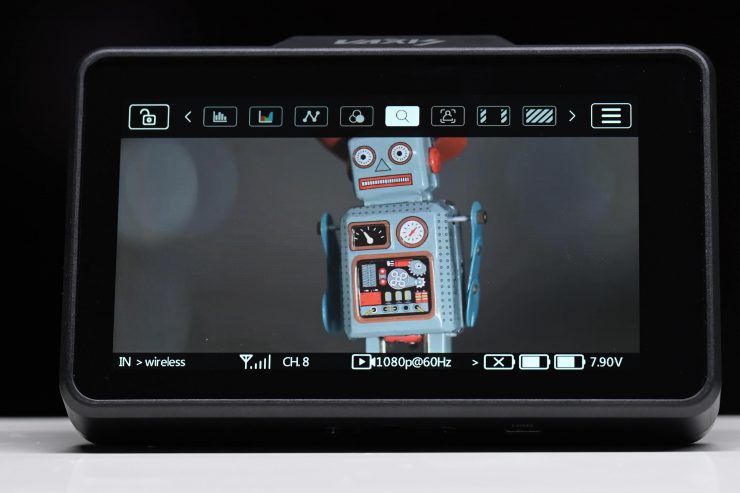
The biggest problem with the image zoom is you can’t move around the screen once you are zoomed in.
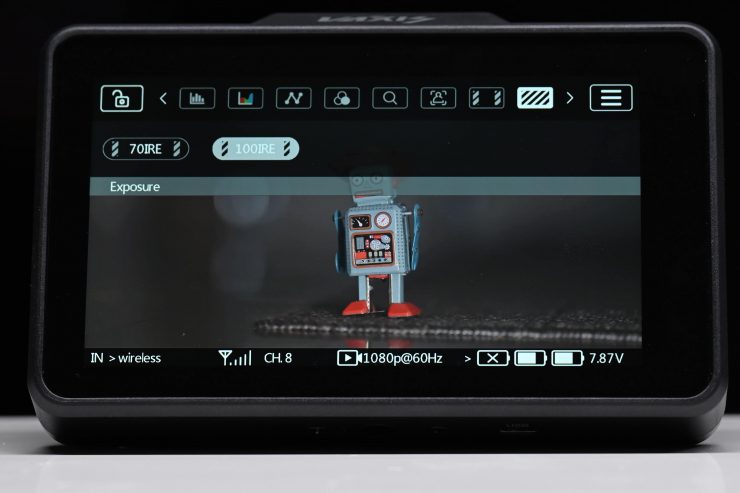
With the zebras, you can only choose to set them at 70IRE and 100IRE.
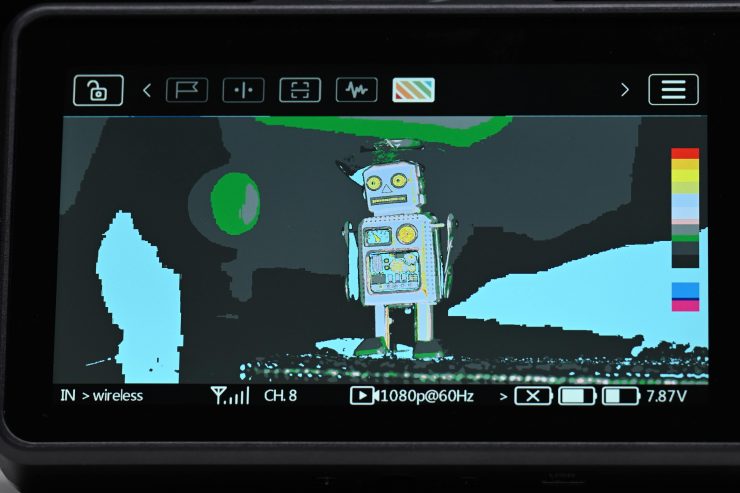
With False Color, you can see a color scale but there aren’t any IRE markings and I have no idea what camera the false-color scale is based on. So many companies making monitors just can’t seem to get false color right.
The touchscreen response is very good on the monitor and it is a lot better than previous touchscreen Vaxis monitors that I have tried.
HDR?
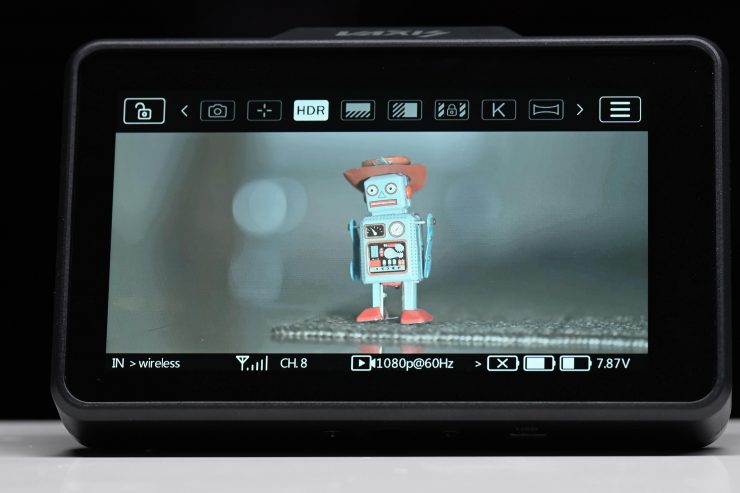
The A5H does feature an HDR setting, but there is zero information about what this is supposed to replicate. I found that if you turn the HDR setting on, all it seemed to do is make everything look brighter.
The A5H is claimed to reach 1,00nits, but it doesn’t do so dynamically as to technically meet the HDR spec (for contrast ratio). However, it can still be used to monitor HDR, but I would say this is more of an HDR simulation than anything else.
A lot of experts will tell you that on the monitoring side, relying on the picture alone, even a true HDR picture in anything other than a studio environment is not ideal and would result in improper exposure adjustments since the perceptions of what is on screen changes so drastically along with the viewing environment. For example, if you are monitoring on a bright sunny day, any subtleties in the darkest areas of an HDR picture won’t be able to be seen by the eye.
In this methodology, reliance on exposure tools and scopes is even more important than before when speaking of HDR, because, in a proper viewing environment, any issues at the extremes of a camera’s dynamic range get magnified much further than with SDR.
Build Quality
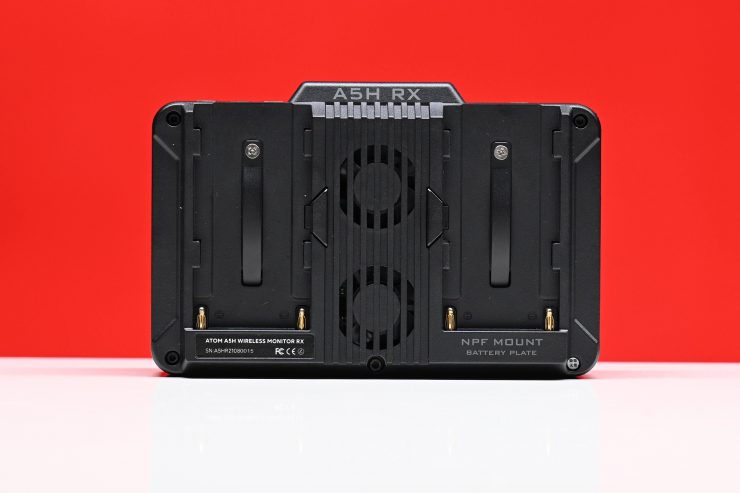
The build quality of the A5H is reasonably good. It is probably not quite as good as an Atomos Ninja V or Ninja V+, but it is a lot more solidly made than most budget monitors of this size that I have come across.
The buttons are reasonably tactile and the battery plate locks down batteries securely.
Mounting Points
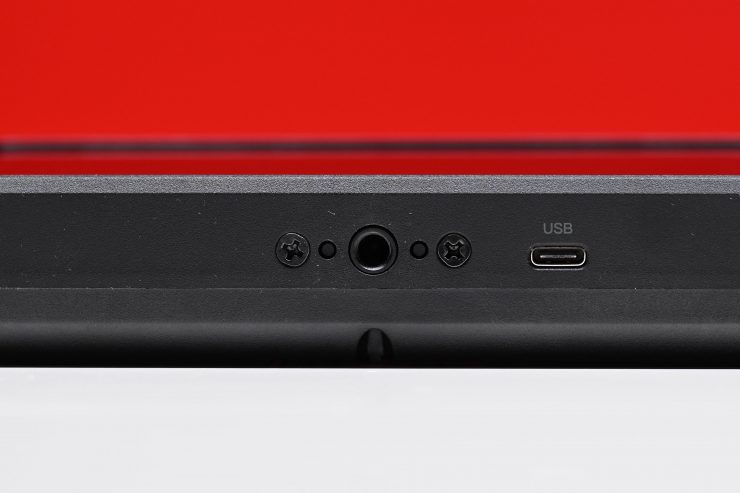
There is only a single 1/4-20″ thread on the bottom of the A5H. This doesn’t give you many options for mounting, but as the A5X has a wireless transmitter or receiver (depending on the version) built-in there isn’t any space to put another mounting point on the top of the monitor.
Weight & Size
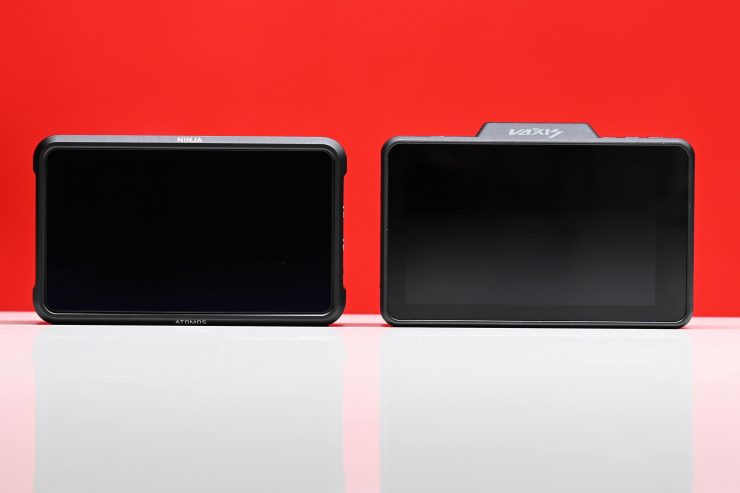
Vaxis lists the weight of the A5X (TX or RX) at 225g / 7.93oz, however, it felt heavier than that to me so I weighed it myself. I found that the actual weight was 330g / 11.64oz.
As a weight reference, the Atomos Ninja V weighs 360g / 12.7oz.
While 330g isn’t overly heavy, once you add a Sony-style NP-F battery on the back, the overall weight is going to make some smaller camera setups a lot heavier.
Control
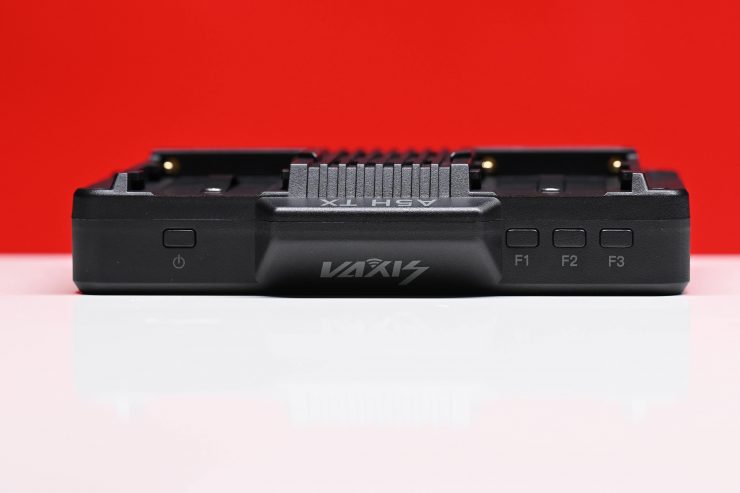
The A5X has the following physical buttons:
- Power On/Off
- Three Functions buttons (F1,F2,F3)
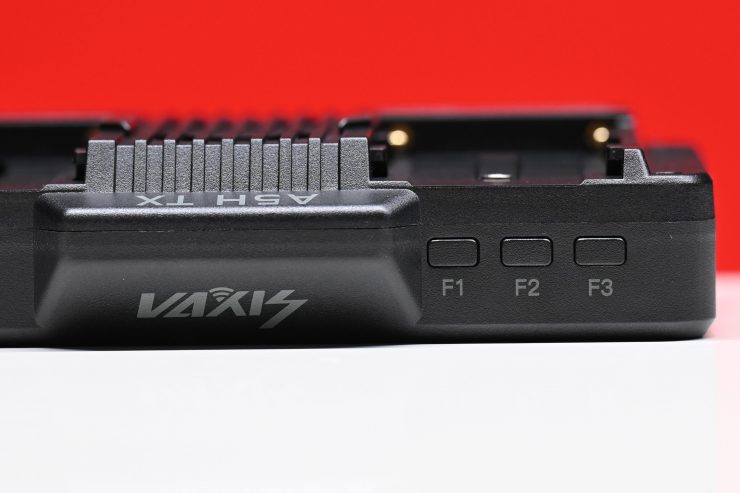
The function buttons and the power on/off are all located on the top of the monitor.
The function buttons are preset to do the following:
- F1- False Color On/Off
- F2- Peaking On/Off
- F3- Center Marker On/Off
Fan Noise
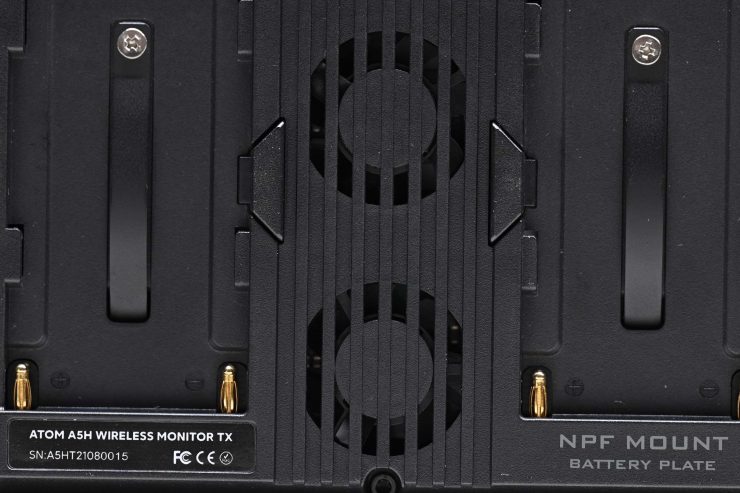
The A5H does feature a couple of small fans.
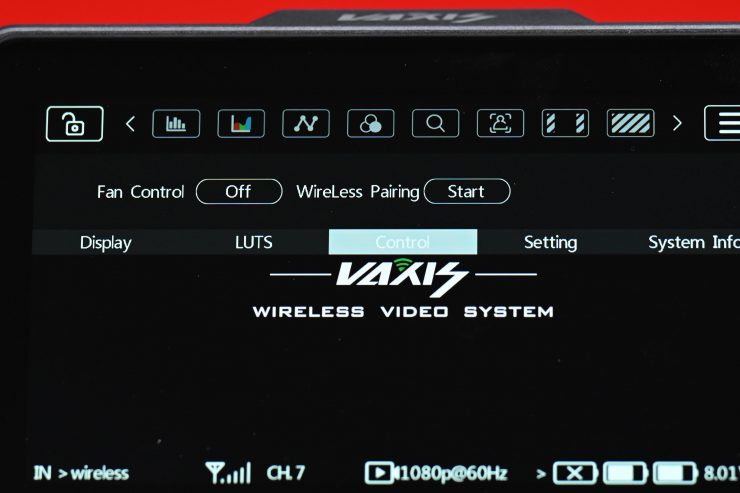
In the menu, you can choose to set the fan to On or Off.
The fans do make some noise, and I found them to be noisier than those on the Atomos Ninja V. However, they do a very good job of cooling the A5H. The Atomos Ninja V was way hotter to touch after being left on for the same amount of time.
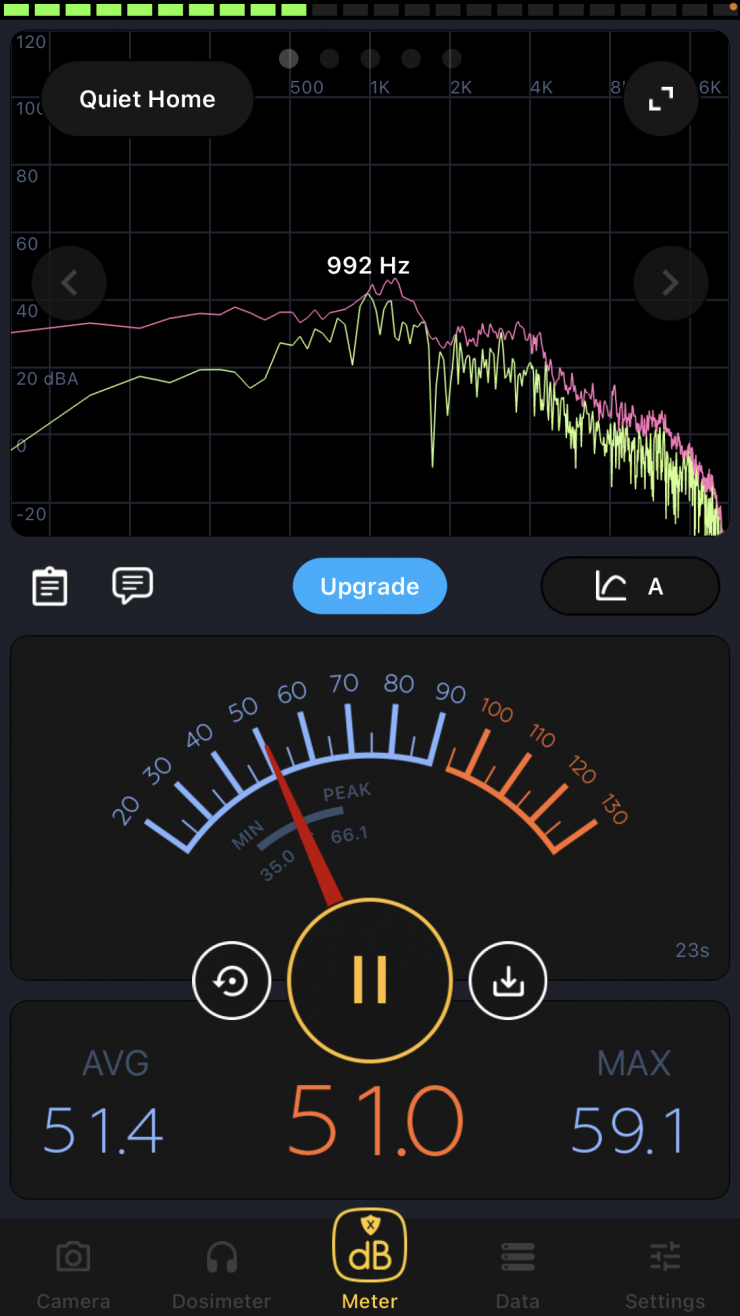

30cm away from the back 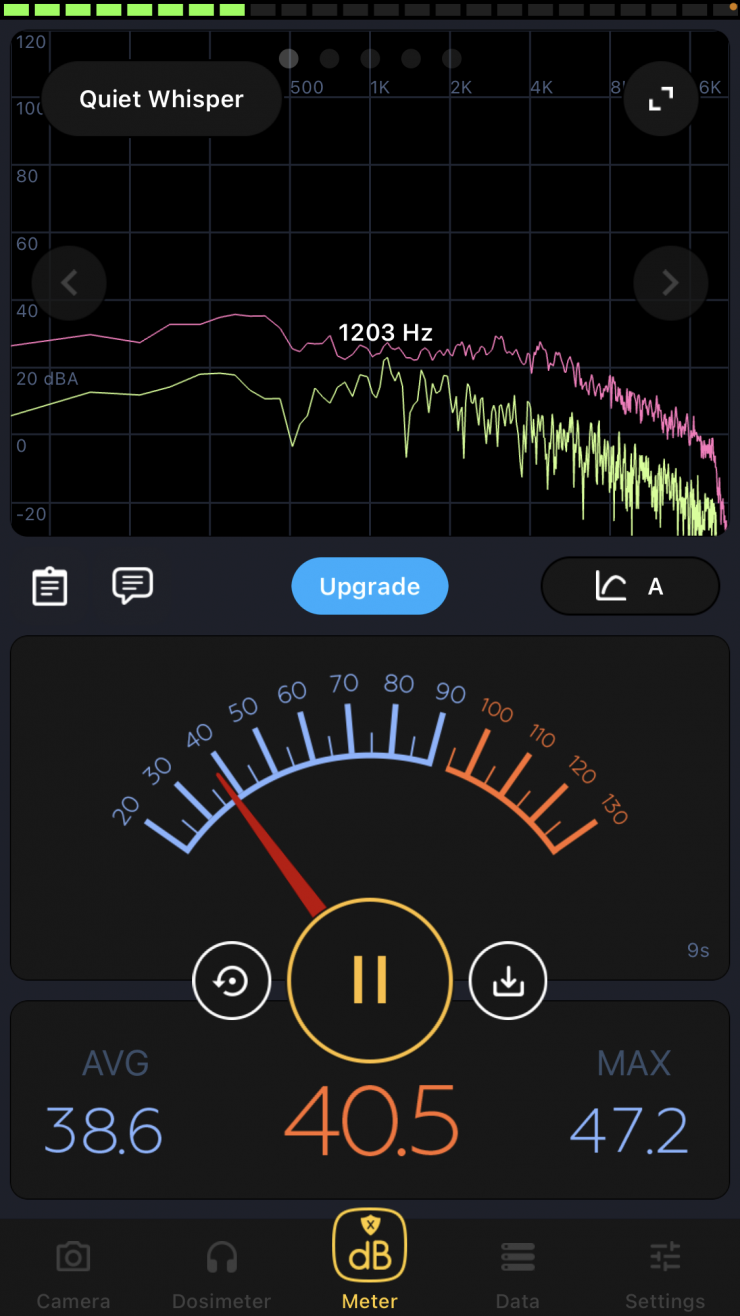
1m away from the back 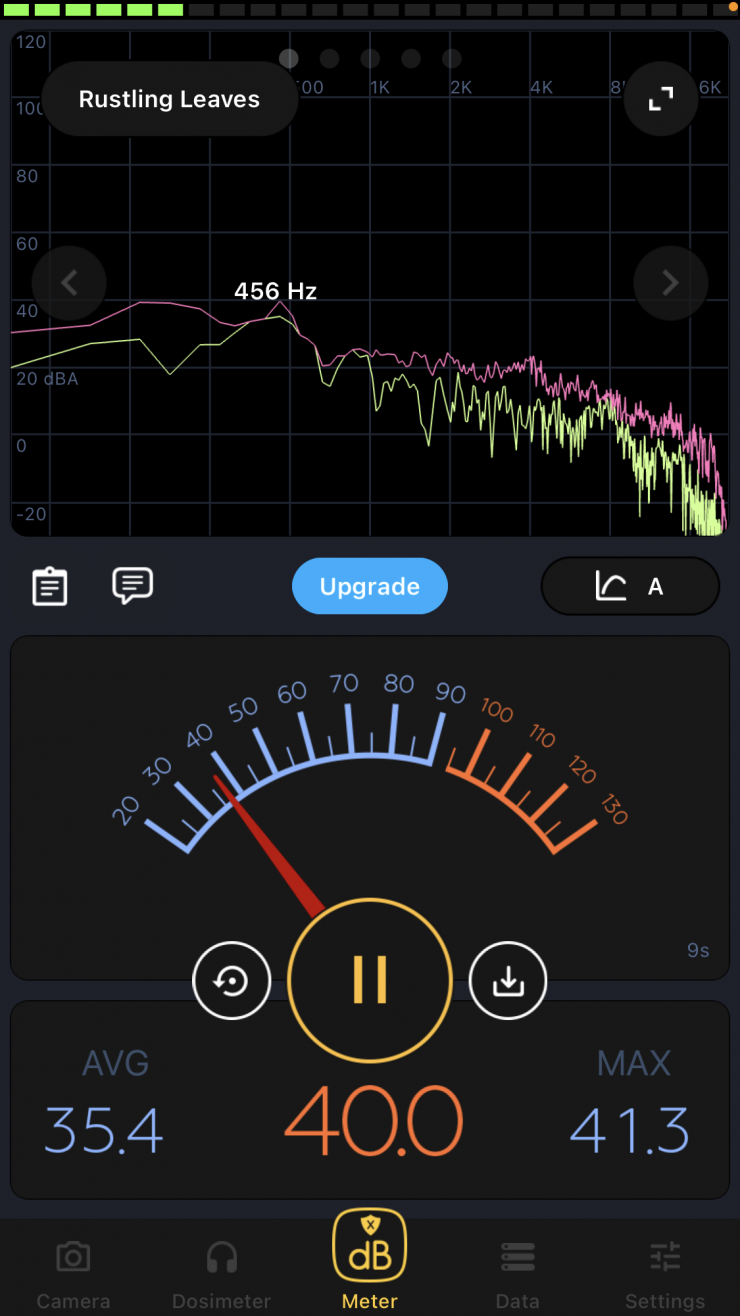
1m away from the front
I measure the fan noise 30cm away from the back of the A5H and 1m away to see how loud the fans were. I also measured the noise 1m from the front of the screen. If you were using the A5H as an onboard monitor and you were recording audio using an onboard microphone then the fan noise could be an issue.
Yes, you can turn the fans off and the A5H does become completely silent. I decided to leave the fans turned off to see how long it took before they either came back on or the unit shut down. The fans came back on after less than 2 minutes of being off.
I did encounter an issue with the fans when they were set to On. After about 30min of use they started making this strange whining noise like an electric shaver.
I had to actually hit the back of the monitor to try and make it stop. Above you can listen.
Inputs/Outputs
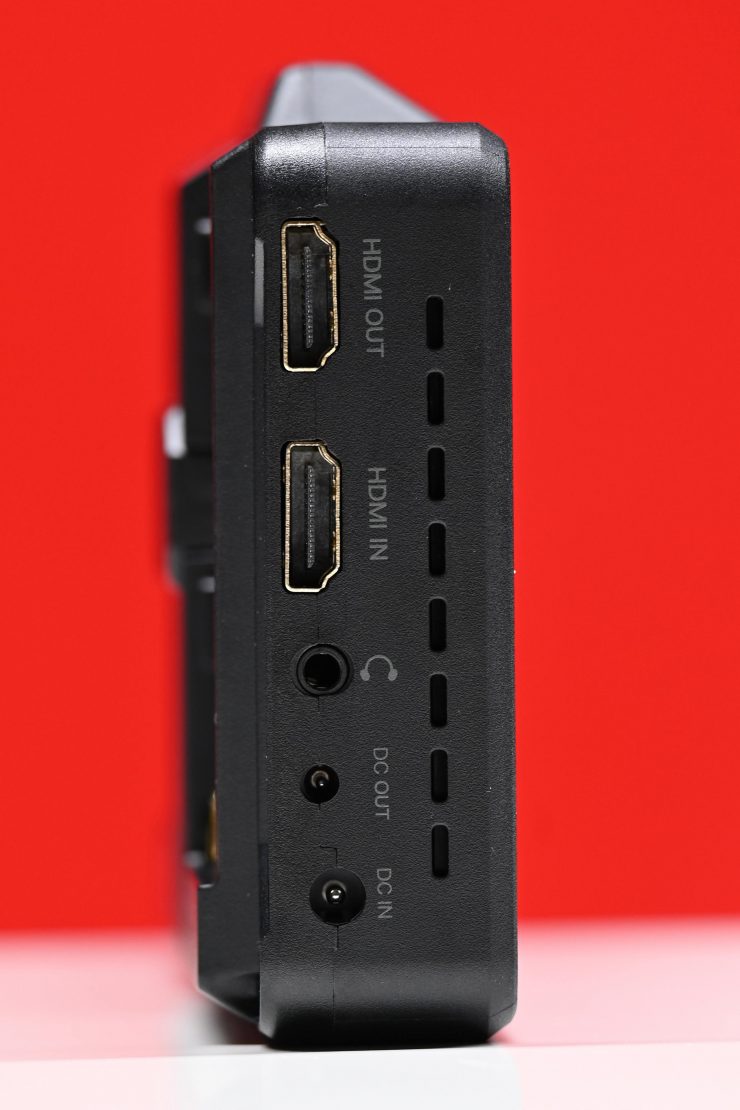
The A5H has the following inputs and outputs:
- HDMI In
- HDMI Out
- 3.5mm Headphone Out
- DC In
- Dc Out
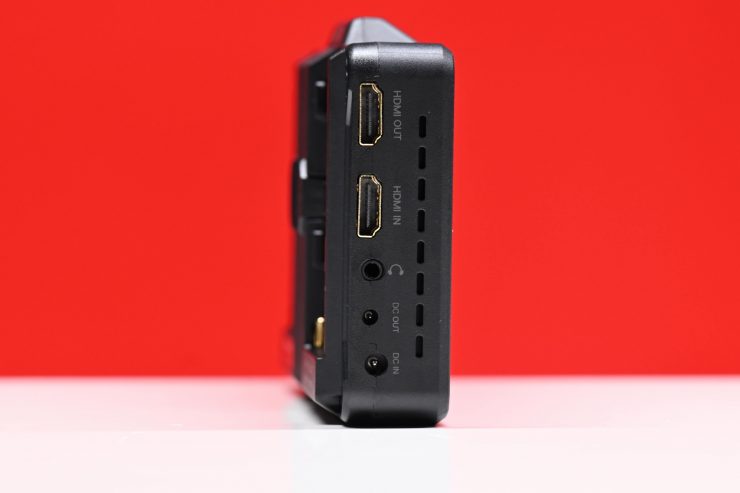
The inputs and outputs are all located on the left-hand side of the monitor (apart from the USB-C which is on the bottom).
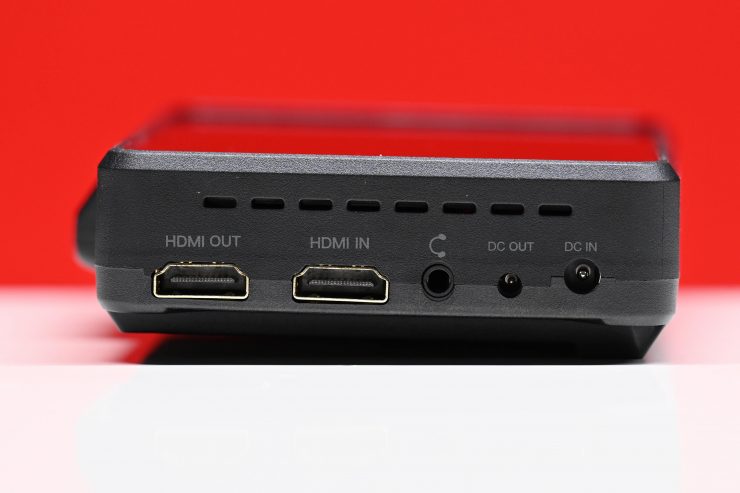
The HDMI ports are not countersunk, so there is no protection from knocks or breakage.
Accepted Inputs
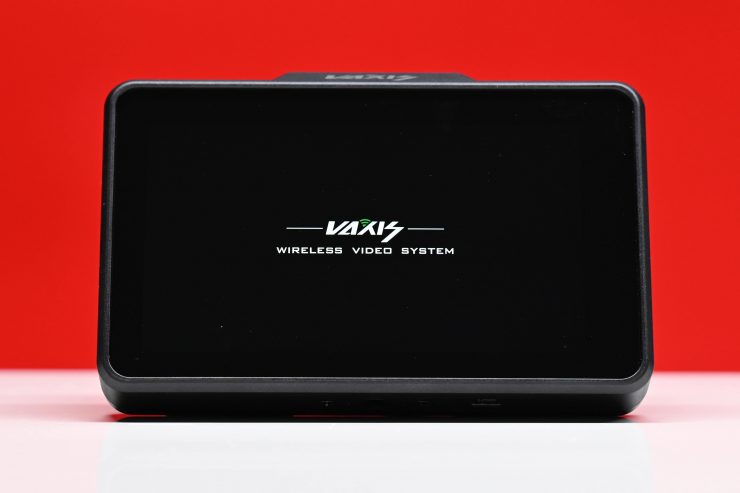
The A5H can receive the following signals over HDMI:
- 1920 x 1080p 23.98/24/25/29.97/30/50/59.94/60
- 1920 x 1080i 50/59.94/60
- 1280 x 720p 50/59.94/60
It can output the following signals over HDMI:
- 1920 x 1080p 23.98/24/25/29.97/30/50/59.94/60
- 1920 x 1080i 50/59.94/60
- 1280 x 720p 50/59.94/60
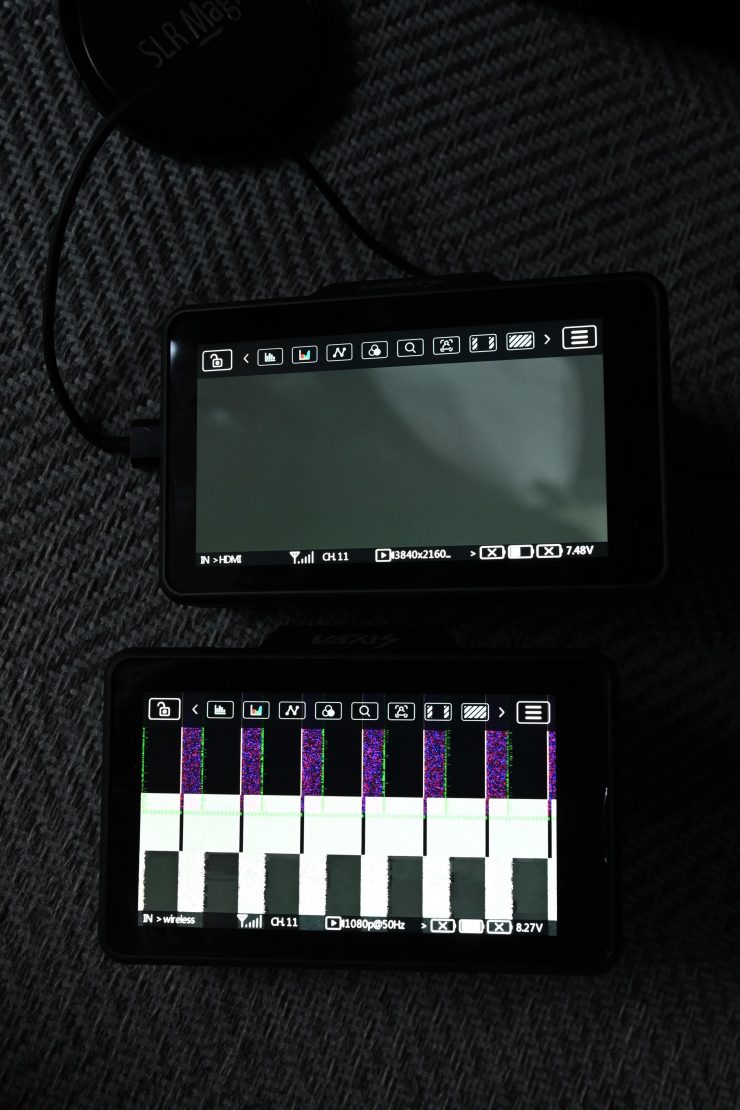
Now, I did encounter an issue that you need to be very aware of when using certain cameras. If you set a mirrorless hybrid to output UHD over HDMI the A5H TX unit can display that signal, however, it can’t transmit it. You will just end up seeing a scrambled display on the A5H RX or Vaxis Vision app. Strangely the audio still gets sent across, just not the video.
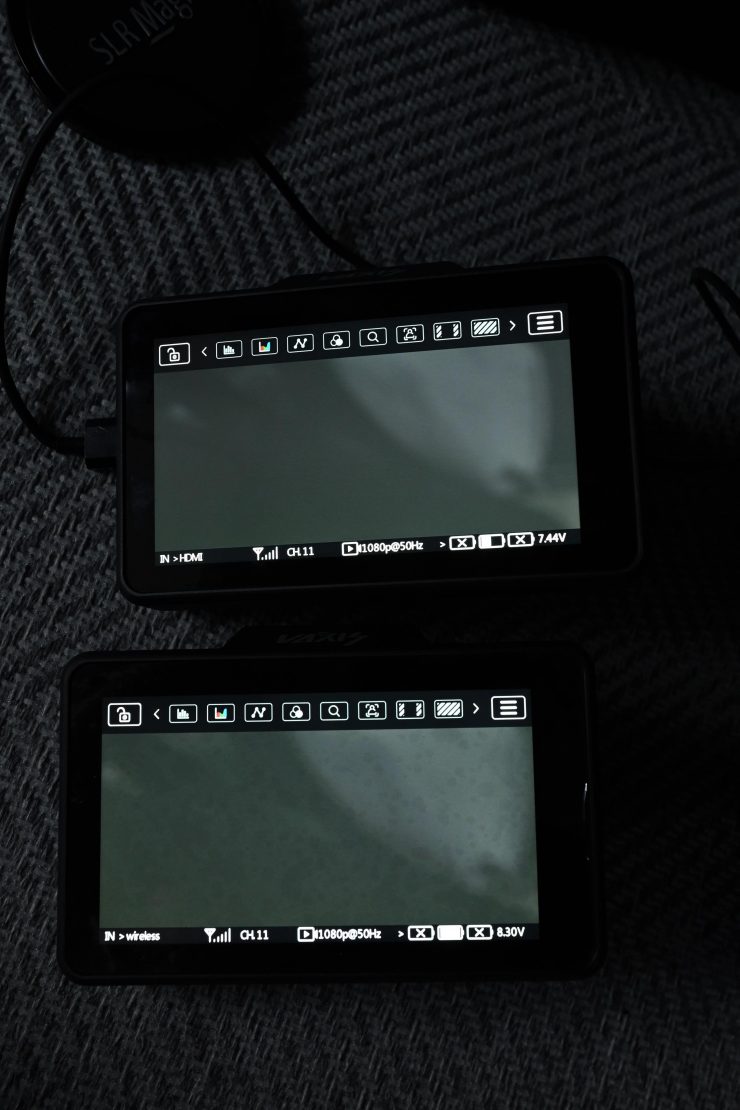
I found that I had to set the HDMI out to 1080p in order for the A5H TX unit to be able to wirelessly transmit an image to the A5H RX or Vaxis Vision app.
Audio Monitoring
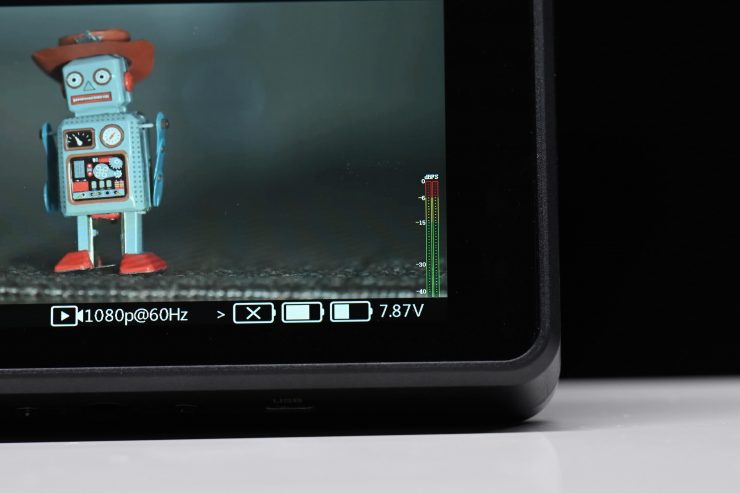
On the A5H you can bring up a small audio minoring tool but there is no way of changing what channel you are listening to.
Antennas
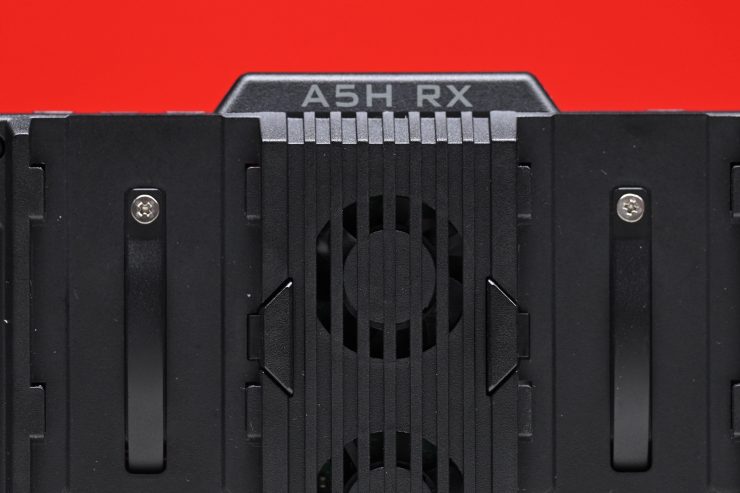
The A5H features in-built antennas.
Power Draw
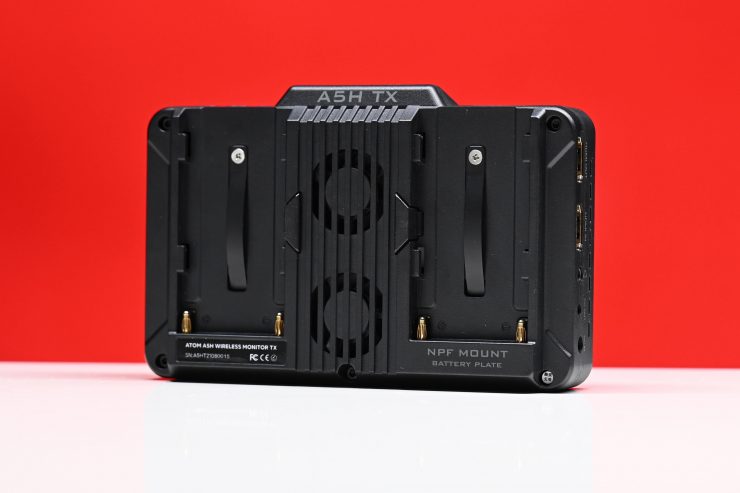
The A5H can be run from one or two Sony-style NP-F batteries or through the 12V DC input.
Form factor
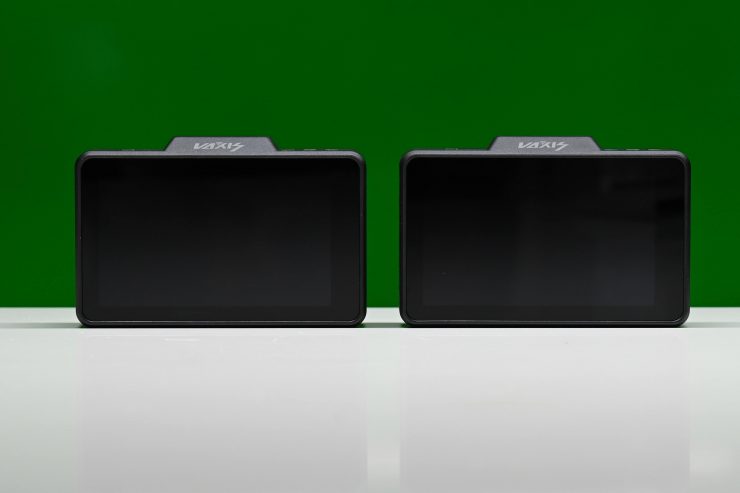
If you are going to build a product that is designed to be used on a camera and/or as a standalone director’s monitor then it not only has to be functional but also easy to use.
The A5H features a pretty basic design and it is suited primarily to be placed on a camera.
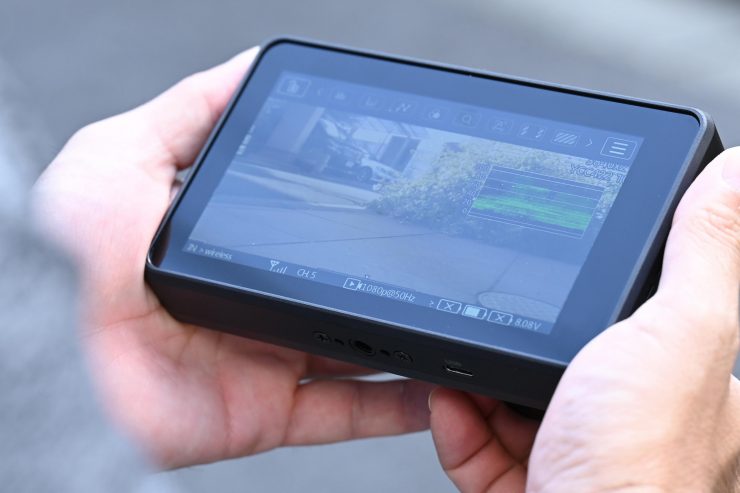
If you are using the RX unit there is nowhere to mount handles or even attach a strap, so if a director or other member of the crew is using it they just have to hold it bare bones.
Usability
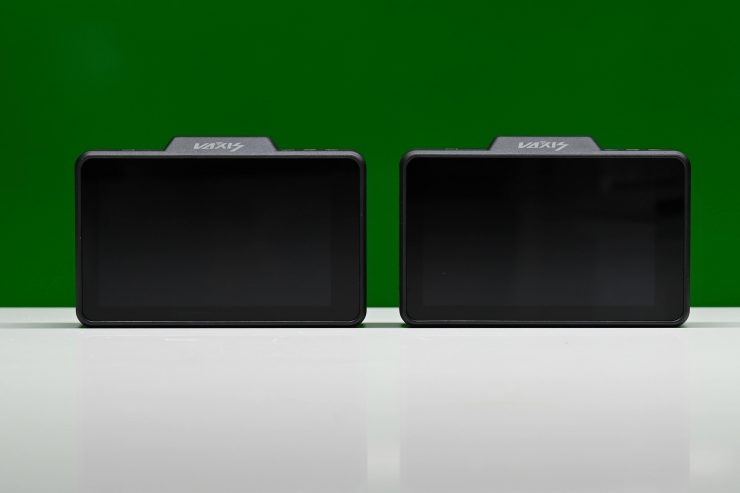
The A5X is pretty straightforward and easy to use. The operating system is fairly good and the quality of the screen is decent enough.
I did find the fan noise to be of concern, especially when the fans just start making a weird noise on their own.
Wireless Plug & Play
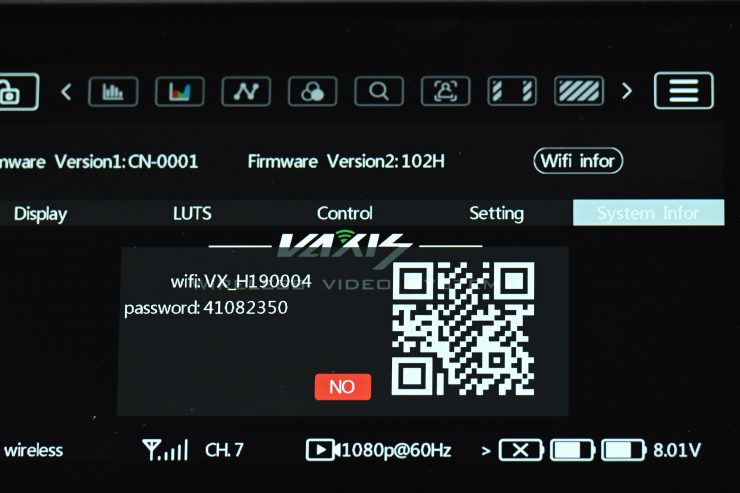
The A5H wireless capabilities are super easy to use. If you are using the A5H TX and A5H RX all you need to do is turn both of them on and everything instantly works for you. There is no complex pairing or setup required.
It is also simple to view images on your smartphone with the Vaxis VisionApp. All you need to do is to choose the generated WiFi network on your smartphone and then open the Vaxis Vision app. An image gets displayed straight away.
I like how Vaxis has made this so easy to do. The last thing anyone wants to do is to be stuffing around trying to connect up wireless devices.
Latency
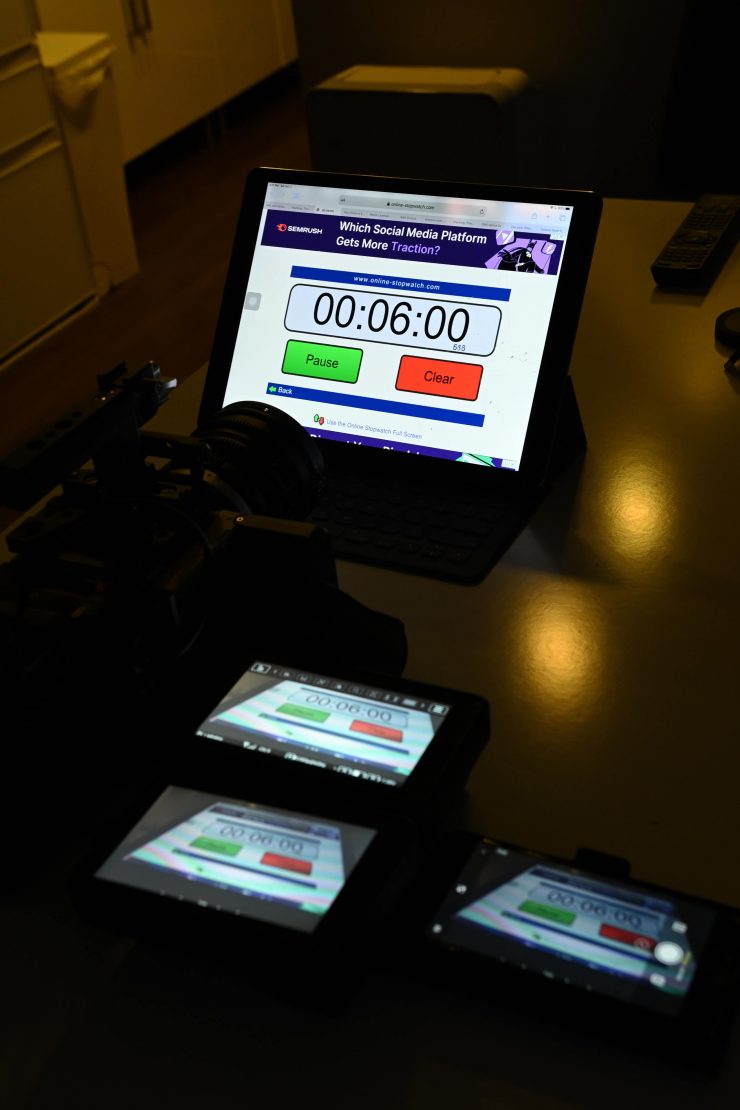
I tested out the A5H TX and the Vaxis Vision App to see how much latency there was.
From my tests, I found that the average latency between the TX unit and the RX unit was 119ms. The average latency between the TX unit and the Vaxis Vision app was 50.33ms.
What do these figures actually mean? Well, anything below 100ms is considered to be low, because most humans don’t perceive a delay that small. Once you get over 100ms we perceive a noticeable delay.
The latency from the RX to the Vaxis Vision app was pretty good, especially for a Wi-Fi-based transmission system. The latency from the TX unit to the RX unit was a little on the high side.
Vaxis Vision App
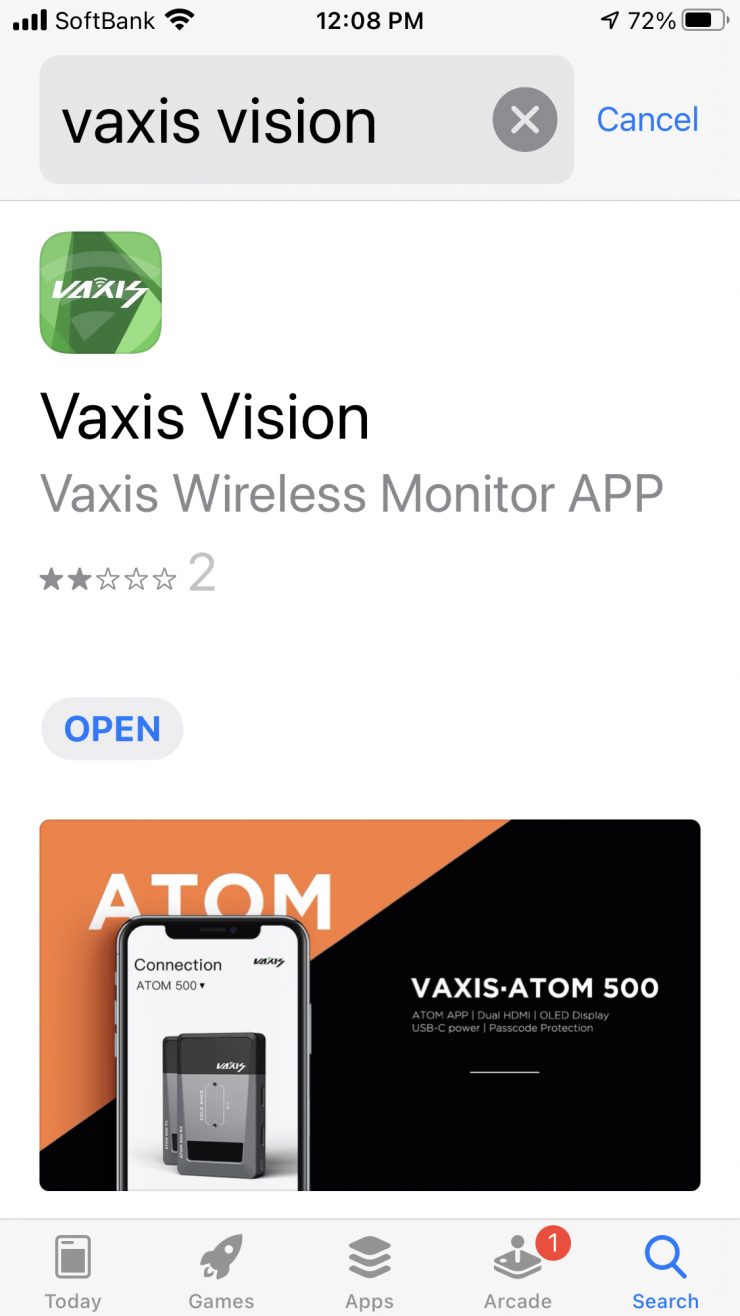
I really wish Vaxis would fix their app. It is pretty poor as far as wireless viewing apps are concerned. There are very few image assist tools available and you can’t even few a clean image on the screen.

The app is straightforward and easy to use and all you need to do is to connect to the generated Wi-Fi network and open the app.
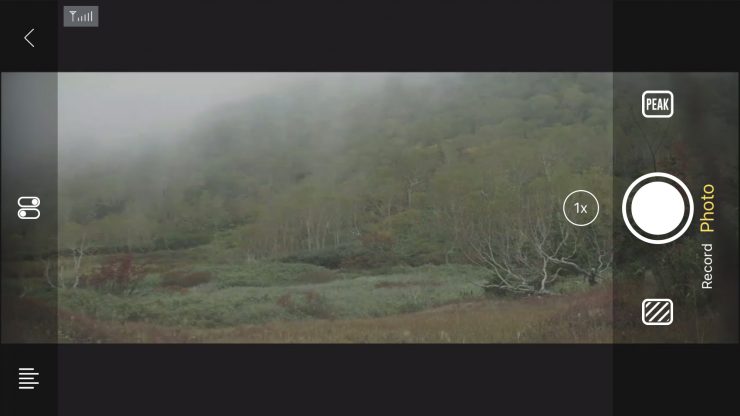
Once you connect to your device you will see the image from your camera straight away.
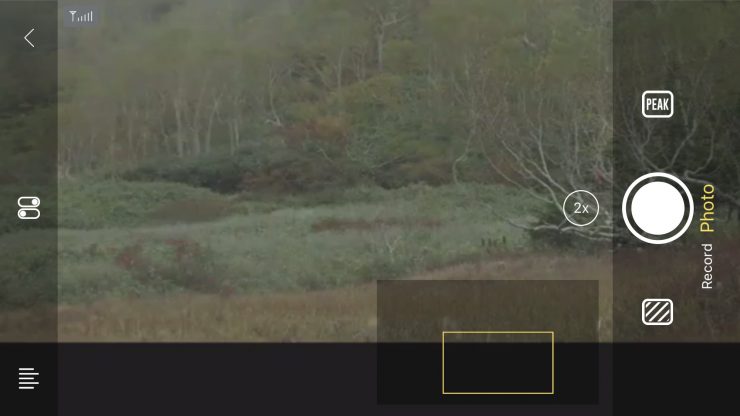
You can choose various levels of image zoom and you can move the selected zoom area around by dragging the position of the yellow box around.
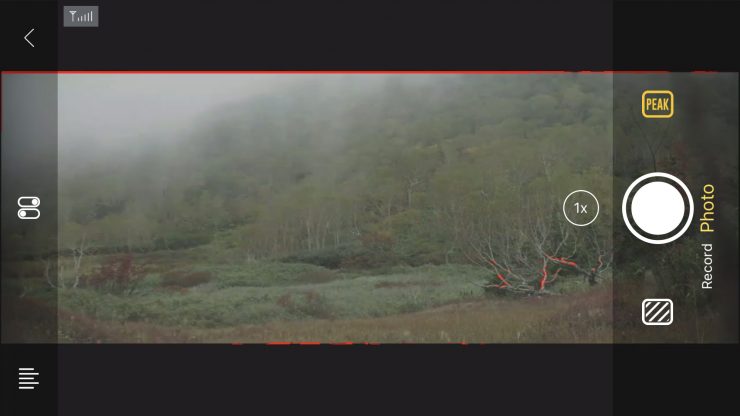
You can turn on/off peaking and also adjust the intensity of the peaking. You can also select zebras as well.
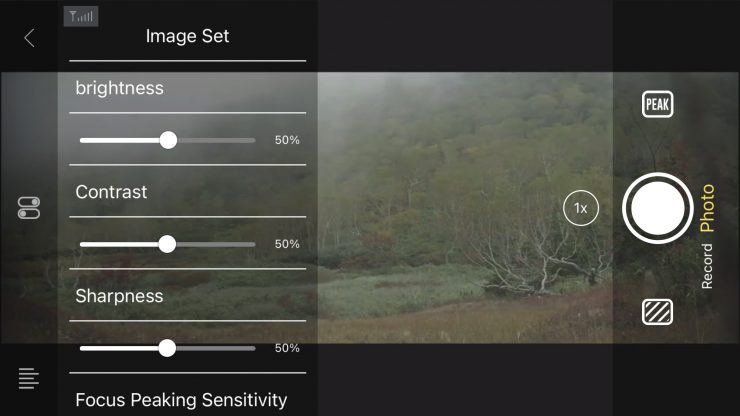
The app also lets you adjust brightness, contrast, and sharpness.
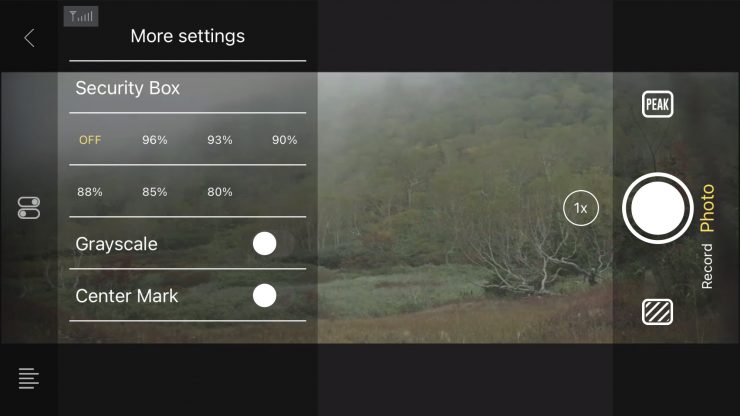
You can also bring up a greyscale, center mark and put up several frame-safe boxes.
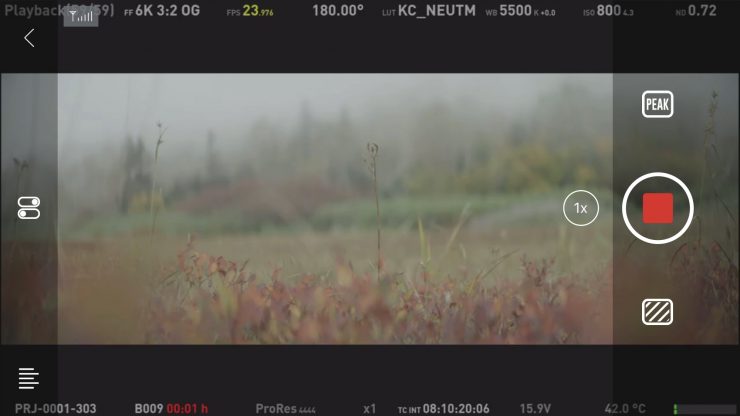
The Vaxis Vision app does have the ability for you to take still images or record low-resolution video directly to your smart device. If you want to record clean images you need to turn your camera’s overlays off on its output.
The app doesn’t allow you to use LUTS, there is no waveform, vectorscope, histogram, or false color option available. My biggest complaint is that you can’t even view a clean screen without all of the overlays.
The only decent aspect of the app is that the actual image looks pretty decent.
The Vaxis Vision app does leave a lot to be desired.
Is the screen bright enough?
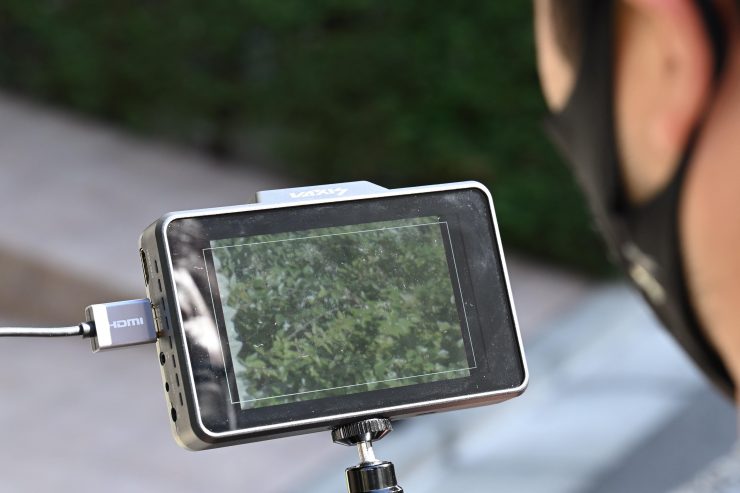
As I have already mentioned, the A5X is claimed to feature a 1,000 nit daylight viewable screen.
You can change the brightness levels of the monitor as well as the backlight strength. There is also the option to change the contrast, saturation, sharpness, and the UI opacity.
I personally think that 1,000 nits are slightly less than what I would consider being daylight viewable. I really think you need a screen with at least 2,000 nits minimum to make that claim.
I actually found that in real-world use the screen was reasonably good outdoors, but you may struggle to see it in very bright sunlight.
There are a lot of new 7″ monitors such as the SWIT T7 and G7 (3,000 nits), TV Logic F-7H II (3,600 nits), and the Portkeys BM7 (2,000 nits). Just like higher resolution doesn’t always equate to a better camera, higher nits don’t always equate to a better monitor.
The panel is listed as 8-bit with 10-bit scopes. A lot of companies list their monitors as 10-bit even though they are really using a 10-bit (8+2 FRC) panel. FRC stands for Frame Rate Control Technology and an 8+2 FRC panel is basically a way of trying to approximate the color reproduction of a true 10-bit panel. A true 10-bit monitor can display 1024 shades of color, whereas a 10-bit (8+2 FRC) panel can only truly display 256 shades. So what a 10-bit (8+2 FRC) panel does is artificially create in-between shades of color by quickly shifting the pixels to go between certain shades of colors.
For example, you would show the main shade of one color for 75% of the time and then another one for 25% of the time. This creates an illusion for the viewer that they are actually seeing more colors than what can actually be displayed.
Image quality
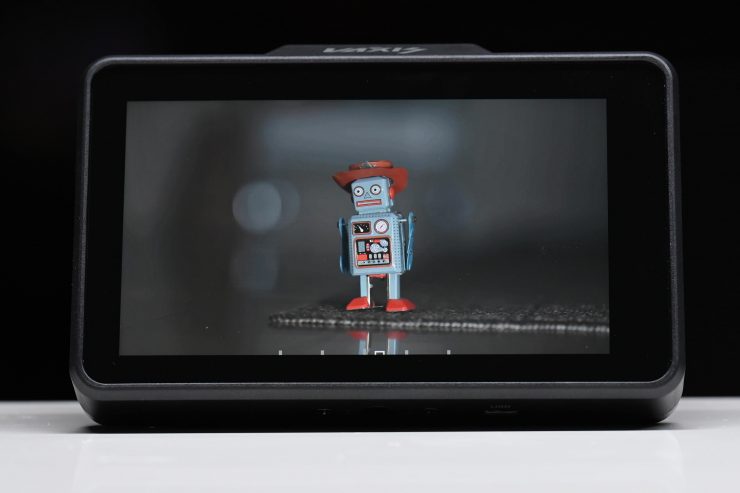
At the end of the day if a monitor can’t display accurate images then it doesn’t matter how many bells and whistles it has.
The picture quality is ok, but not great on the A5H. I found that the A5H leans quite green.
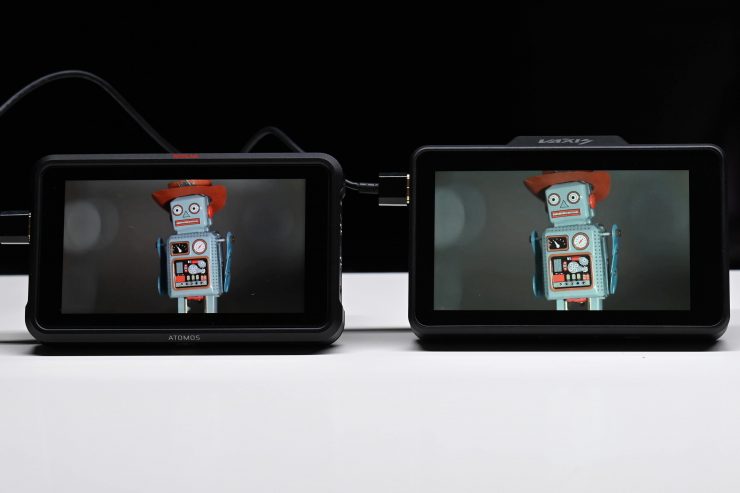
Above you can see an image comparison between the A5H and Atomos Ninja V. The Vaxis doesn’t have as much contrast as the Atomos and I found that red colors looked orange.
The trouble with trying to evaluate any monitor’s image quality is that it is very subjective. What one person may think looks good, another may think it looks terrible. For me personally, I want the monitor to match as closely to what I am seeing in my camera’s EVF.
Does accuracy really matter?
This may sound like a ridiculous question to ask, but with everyone watching content on different screens and types of screens, it’s a legitimate question.
Just because you are basing color accuracy, brightness, and contrast off whatever monitoring or grading monitor you are using there is very little chance that it is going to be seen by someone as intended unless it happens to be shown in a movie theatre (and even then there is still variables).
In the case of giving a monitor to a director, producer, or client, does it really need to be super accurate? That answer is really going to depend on the level of production. For me personally, I would rather try and provide the best image possible so that a director, producer, or client knows exactly what they are getting. I found that the image from the A5H was an ok, but not a great representation of what i was seeing on my camera.
Is it actually 1,000 nits?
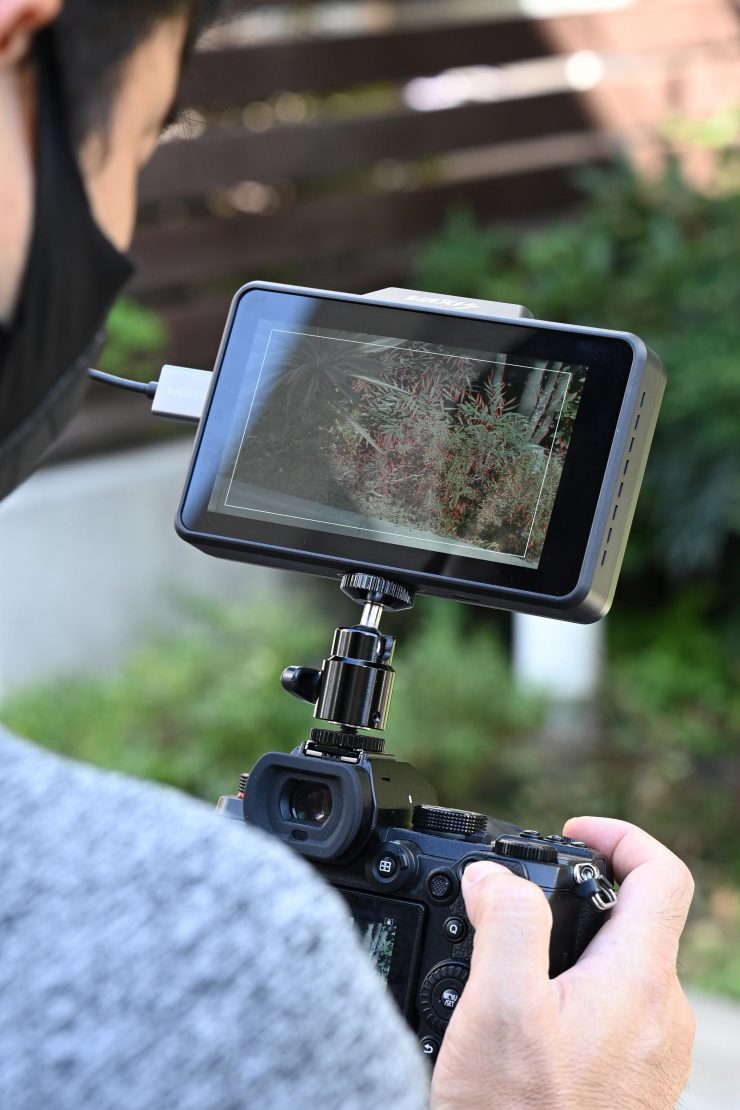
To check the claimed brightness of the A5H, I shot a white card and then exposed the image so it was just below 100% so there was no clipping. I then took a reading from the A5H using a Sekonic C-800. The A5H has a claimed maximum brightness of 1,000 nits so does it produce 1,000 nits?
The A5H gave me a reading of 796 lux and a Kelvin color temperature reading of 6192K when the monitor was set at 6500K. This was with the backlight set to 100.
Just for reference, it had a CC score of 0.9M. The reading of 796 lux was well below Vaxis’s figure of 1,000 lux.
As a comparison, I measured the Atomos Ninja V at the exact same time and I got a reading of 960 lx. The Ninja V is definitely brighter and it maintains good black levels and contrast when used at its maximum brightness.
Power up time
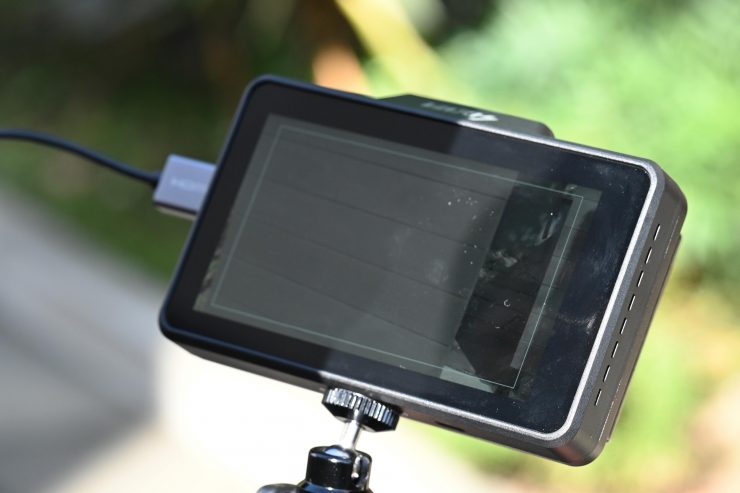
I hate monitors or products that take too long to boot up before you can use them. The A5H boots up reasonably quickly. I timed it at about 6 seconds from the time I turned it on till I got a picture up on the screen.
Wireless performance
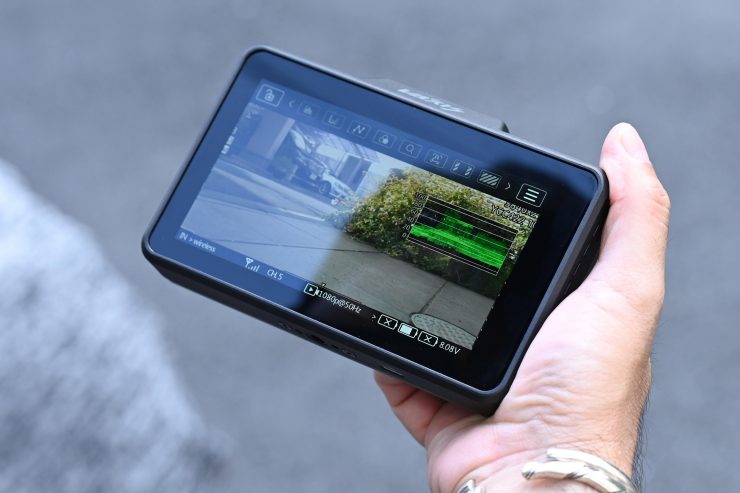
This is always a hard one to review and test. Wireless range and performance depend on where you are using it. In one location you may get 600′ of range or more, and in another, you may be lucky to get 50′. From my testing here in Japan, I found the wireless range to not be very good. Again, I need to stress that wireless performance very much depends on the environment you are using it in.
I could get less than 100m / 328′ before the signal dropped out completely on the A5H RX unit. This was way less than the 182.8m /600′ range that Vaxis claims.
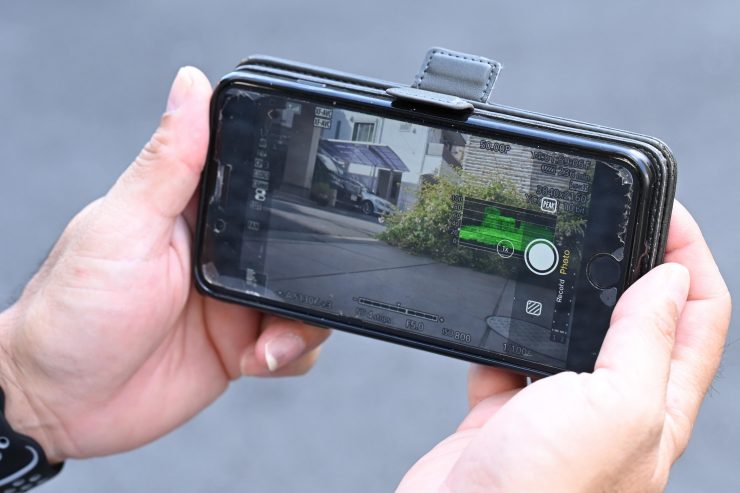
When I was using the Vaxis Vision app, the signal dropped out after around 30m / 98′. The image on the Vaxis Vision app was very inconsistent and not stable at all.
Once the wireless signal dropped it reappeared automatically once I came back into range. I didn’t need to turn anything off and then back on again.
I also wanted to see what would happen if I lost connection, so I turned the receiver off and then back on again. It took roughly 15 seconds for the receiver to re-establish a connection which was reasonably quick.
Next, I turned the transmitter off, which is more commonly what may happen when you change over a camera battery or power the camera off and then on again. This time it took around 25 seconds for the picture to re-establish.
Is it a disadvantage to having the wireless built-in?
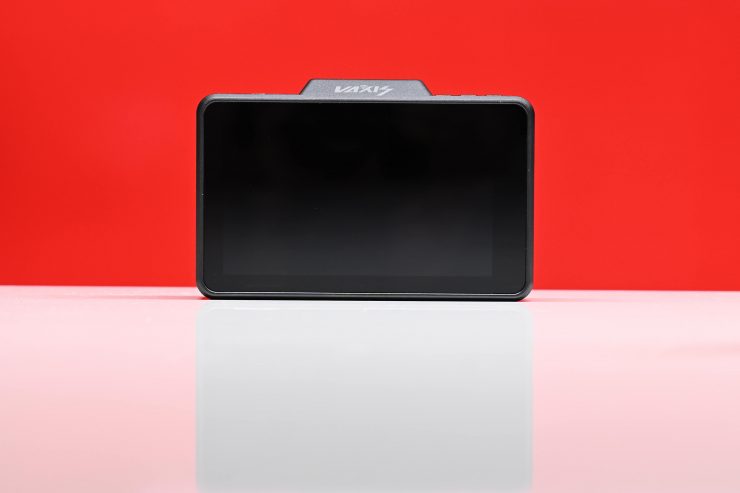
This is a question a lot of people are bound to ask, so I’ll address it from my perspective. No, I don’t think it is a disadvantage having it built-in, and here is why. The in-built RX doesn’t really make the monitor that much bigger.
Price
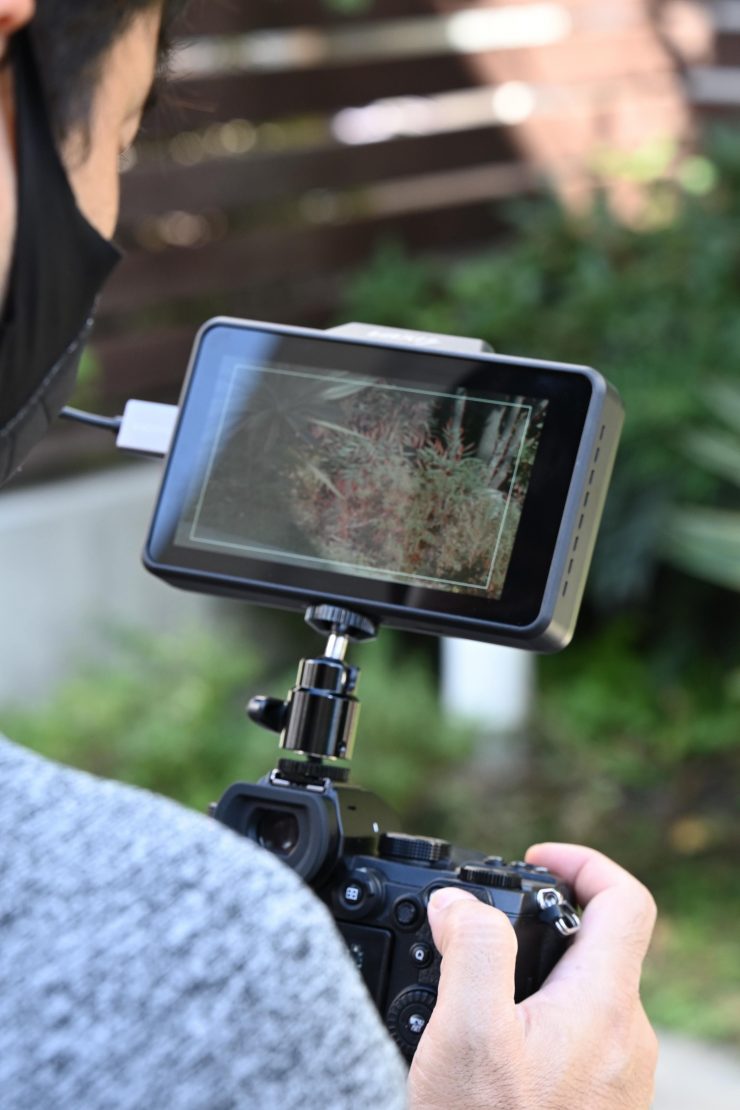
The retail price for a single A5H TX/RX is $499 USD. The kit that includes a TX and an RX is $899 USD.
Vaxis is offering a 10% discount and a free Tabletop Mini Tripod throughout the whole of November with the purchase of an A5H.
Thoughts
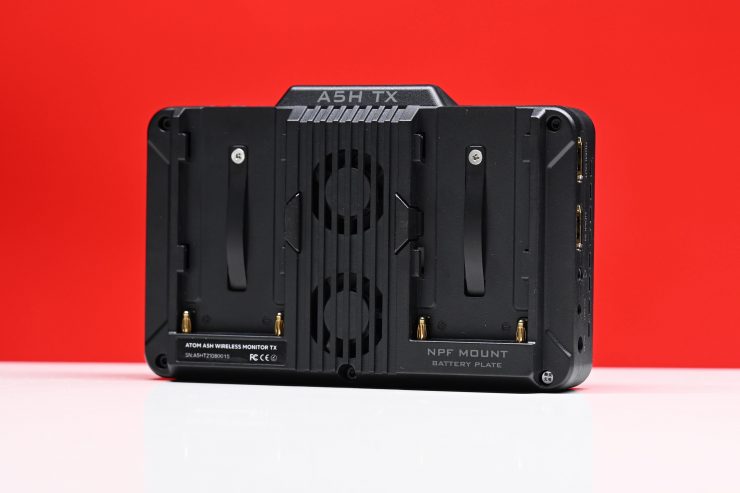
The A5H, despite having some flaws is a pretty good budget wireless video solution that won’t break the bank. The screen quality is ok and the operating system is straightforward and easy to use.
It is nice that you can just use the A5H as a stand-alone monitor when you don’t need the wireless capabilities. The A5H TX unit allows you to have a decent onboard camera monitoring solution with the added ability to be able to transmit wireless video that you can view on a free app via a smartphone. This keeps costs down.
The Vaxis Vision App is perhaps the Achillies Heel of this product. It really needs a serious overhaul.
At the end of the day, a monitor or an EVF is how we judge everything we shoot. Why on earth would you not want to use the best possible option you can afford. A good chef isn’t going to buy an expensive oven and then throw a frozen pizza in there and expect it to taste like a freshly made one using quality ingredients. Do you really want to use the equivalent of a frozen pizza as your sole monitoring option?
With monitors, you usually pay for what you get, and if you want a really good monitor then it won’t come cheap. If you don’t want to spend a lot of money then you have to expect that compromises will have been made.
I like the concept of the A5H, but as I previously said, the app does need an overhaul. The A5H is a decent product and it will suit those on a budget.

